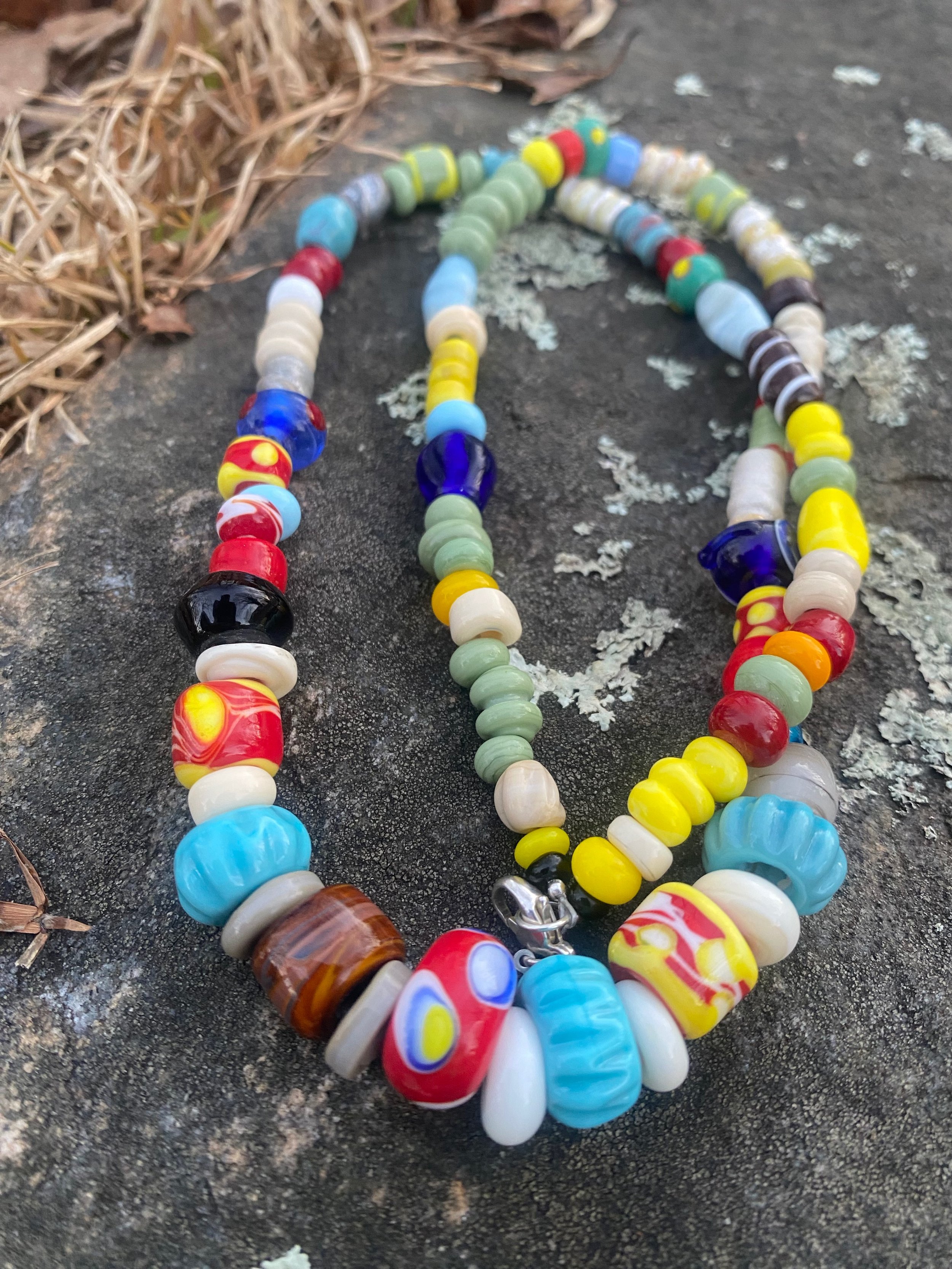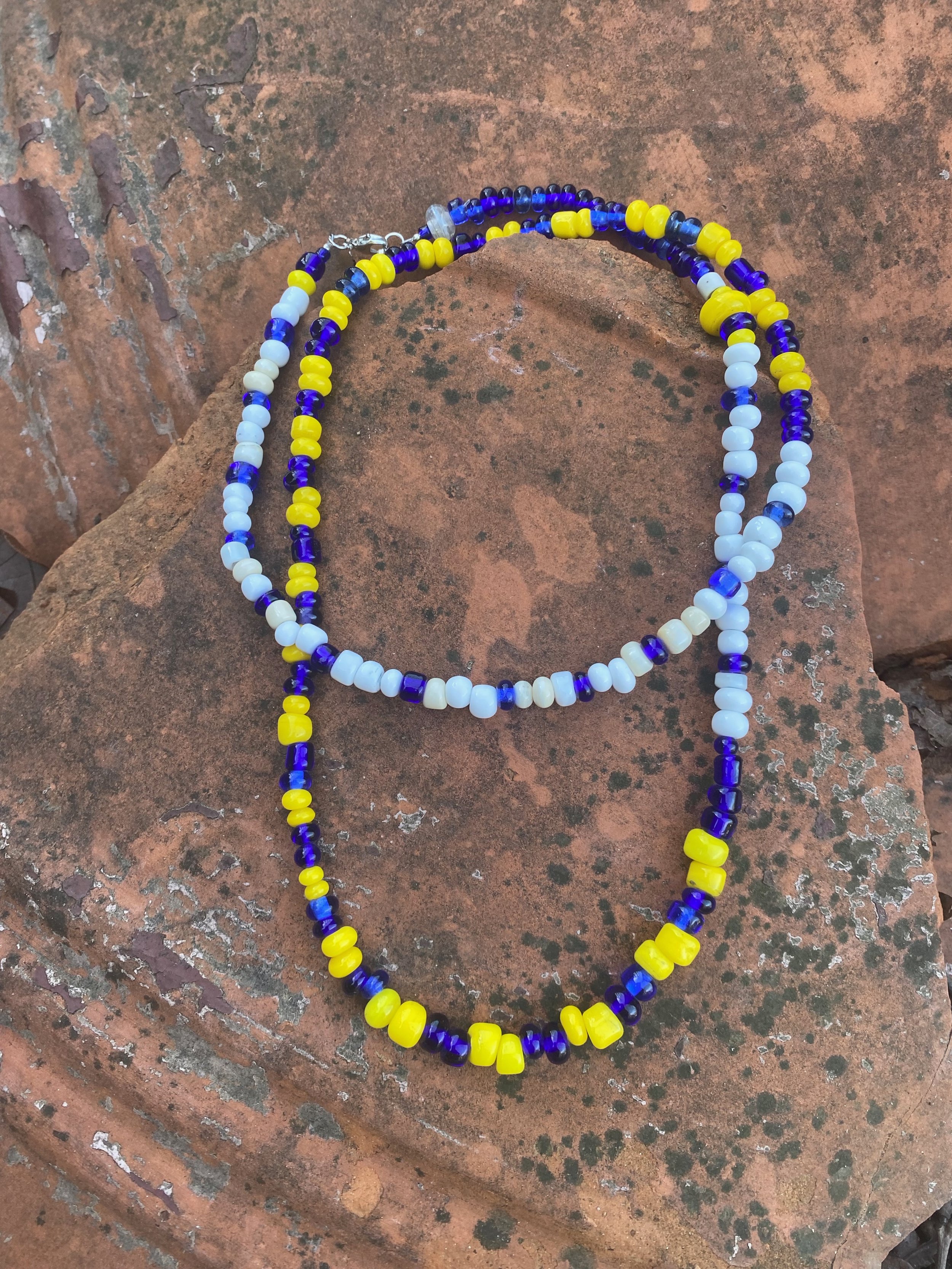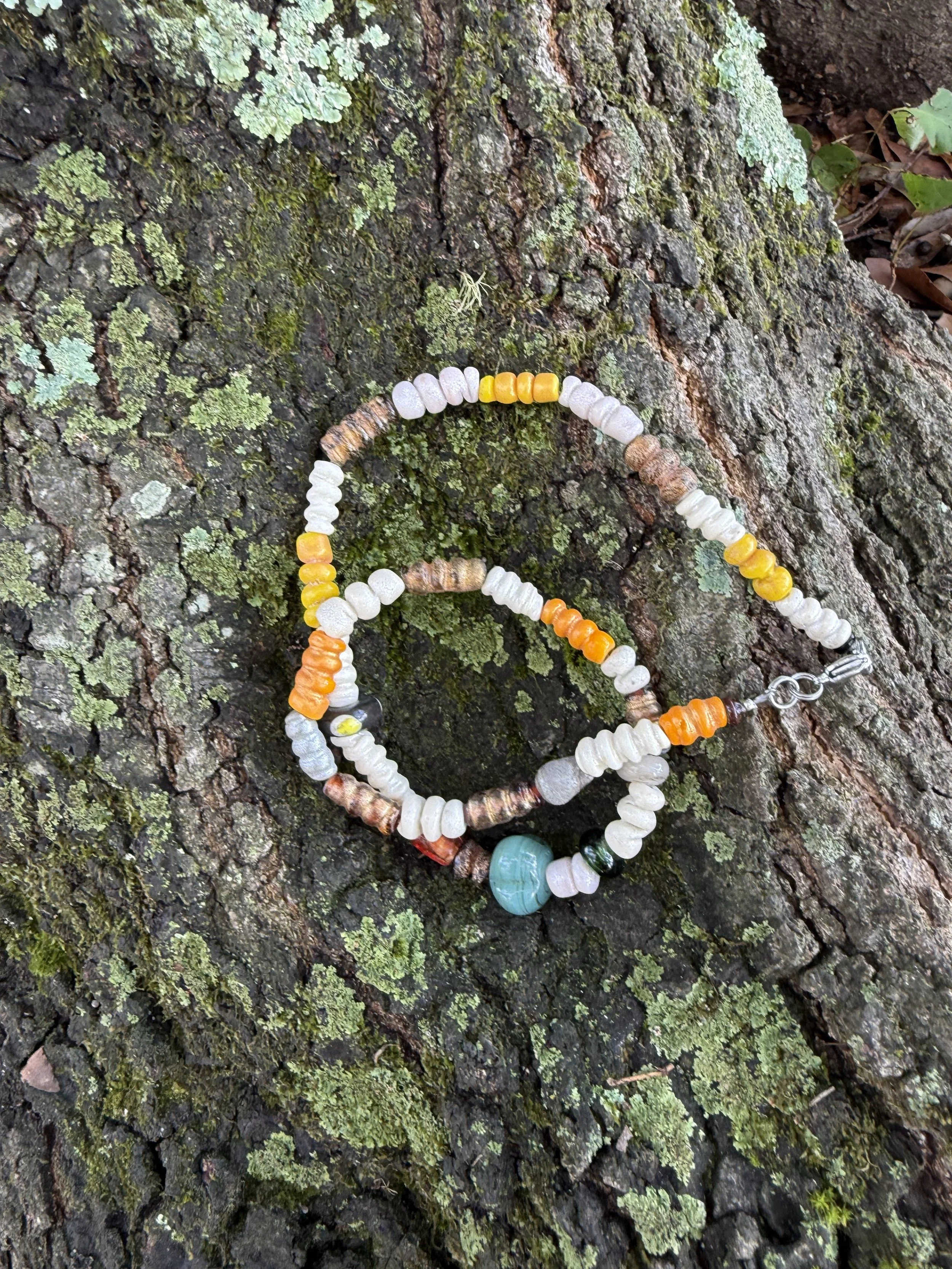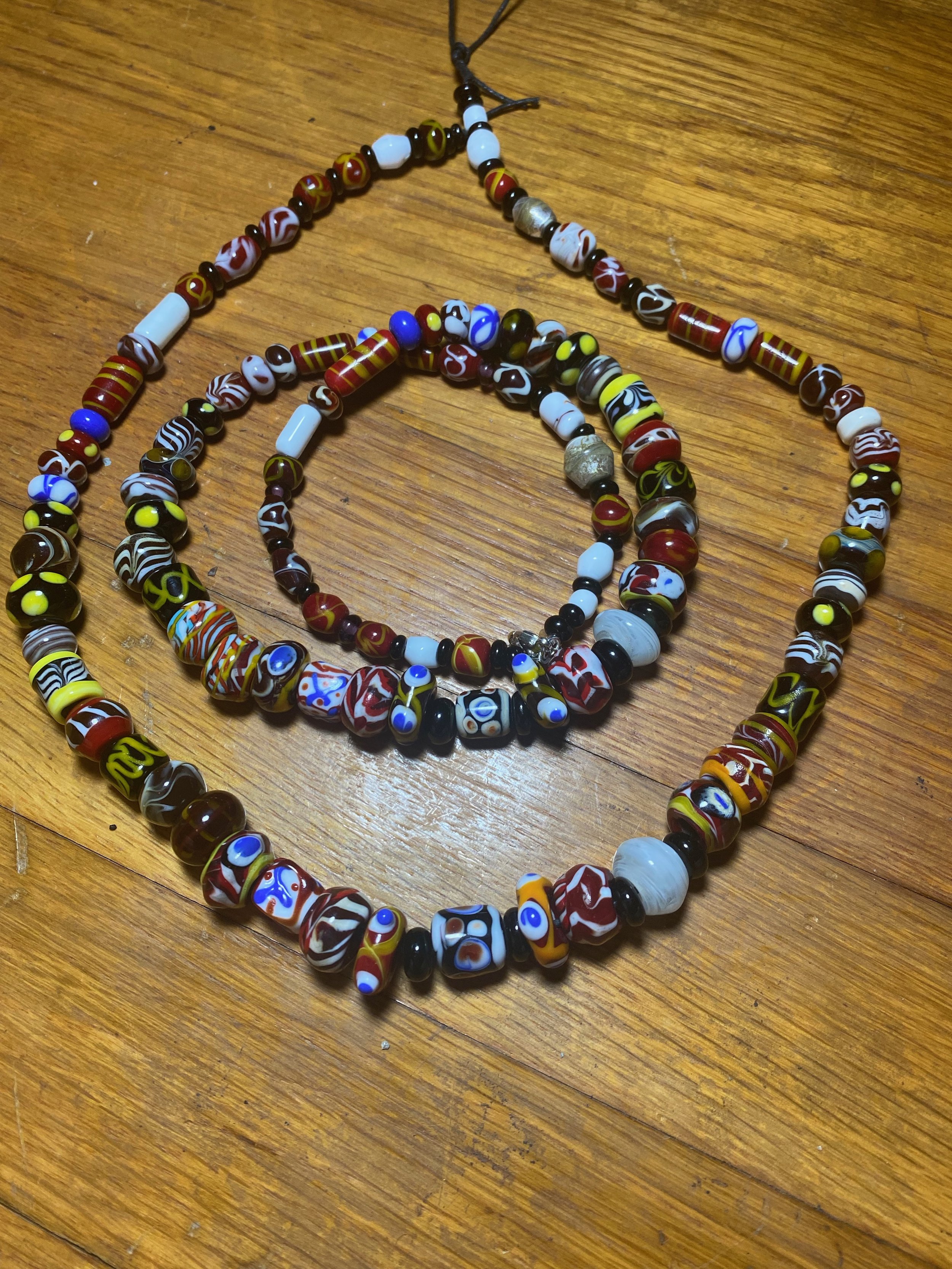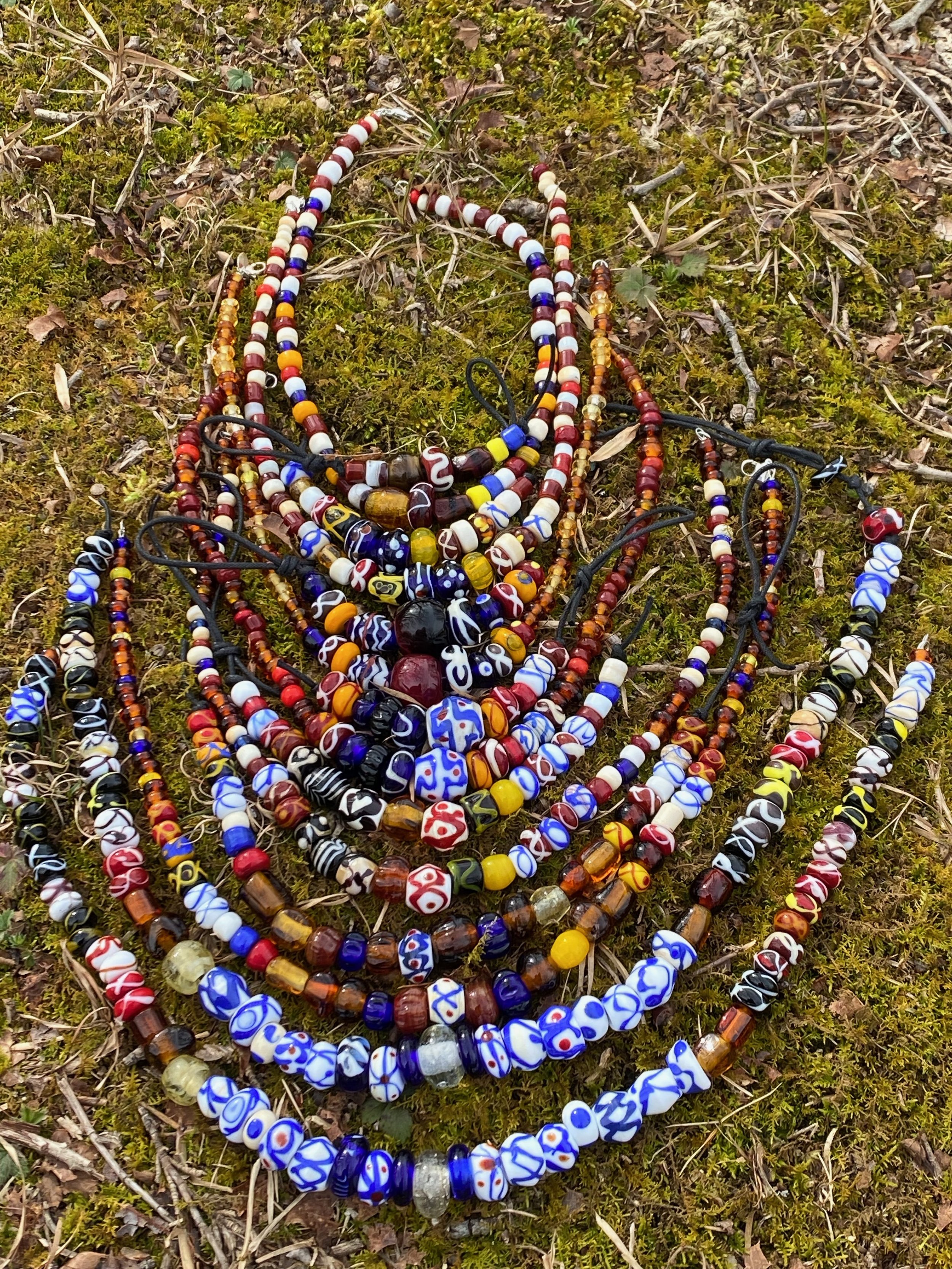Ancient Strands
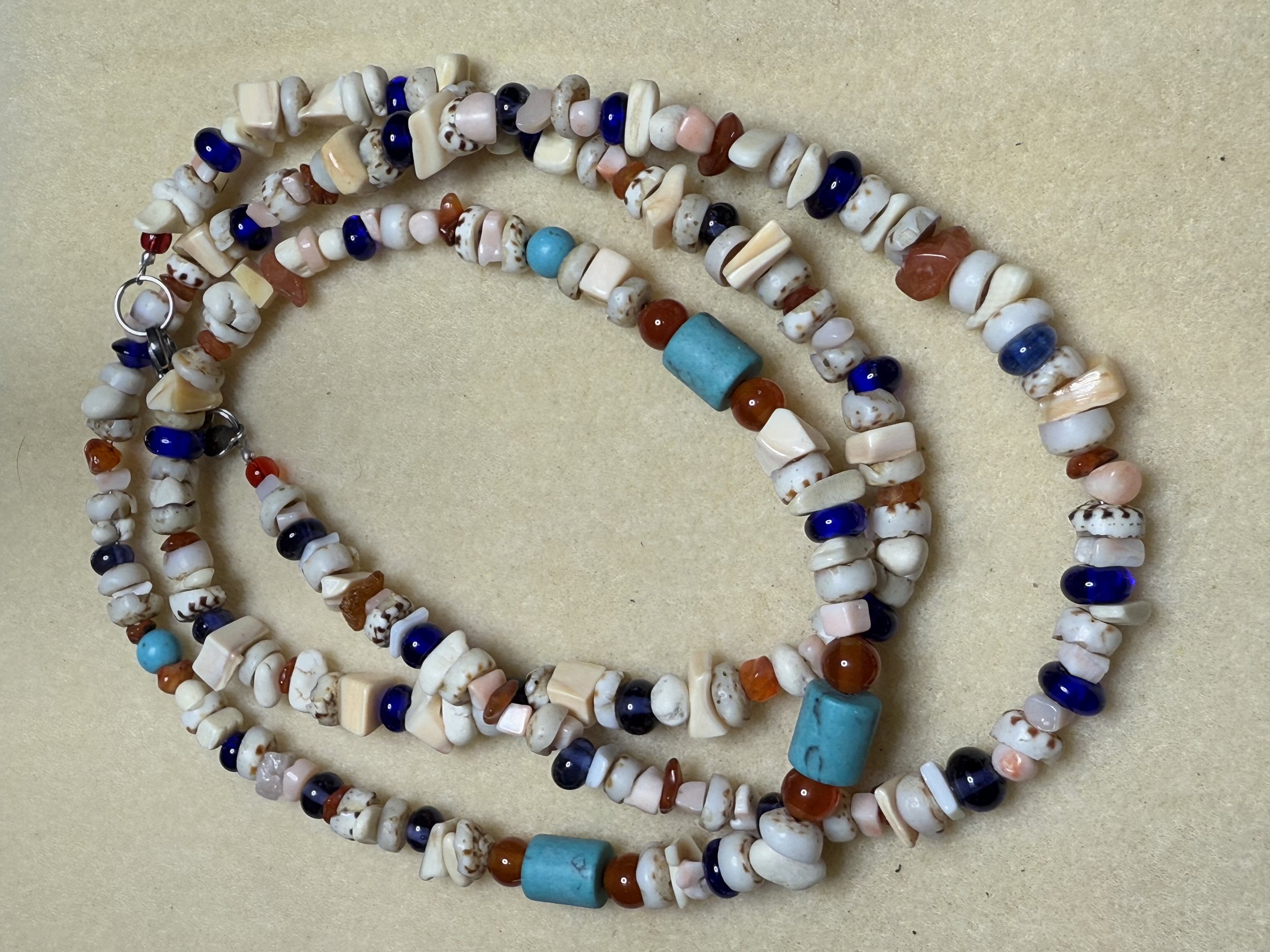
Uruk 3300 to 3000 BCE, Temple at Tell Brak. Inspired by one at British Museum.

Ur Graves (2150 - 2000 BCE) British Museum
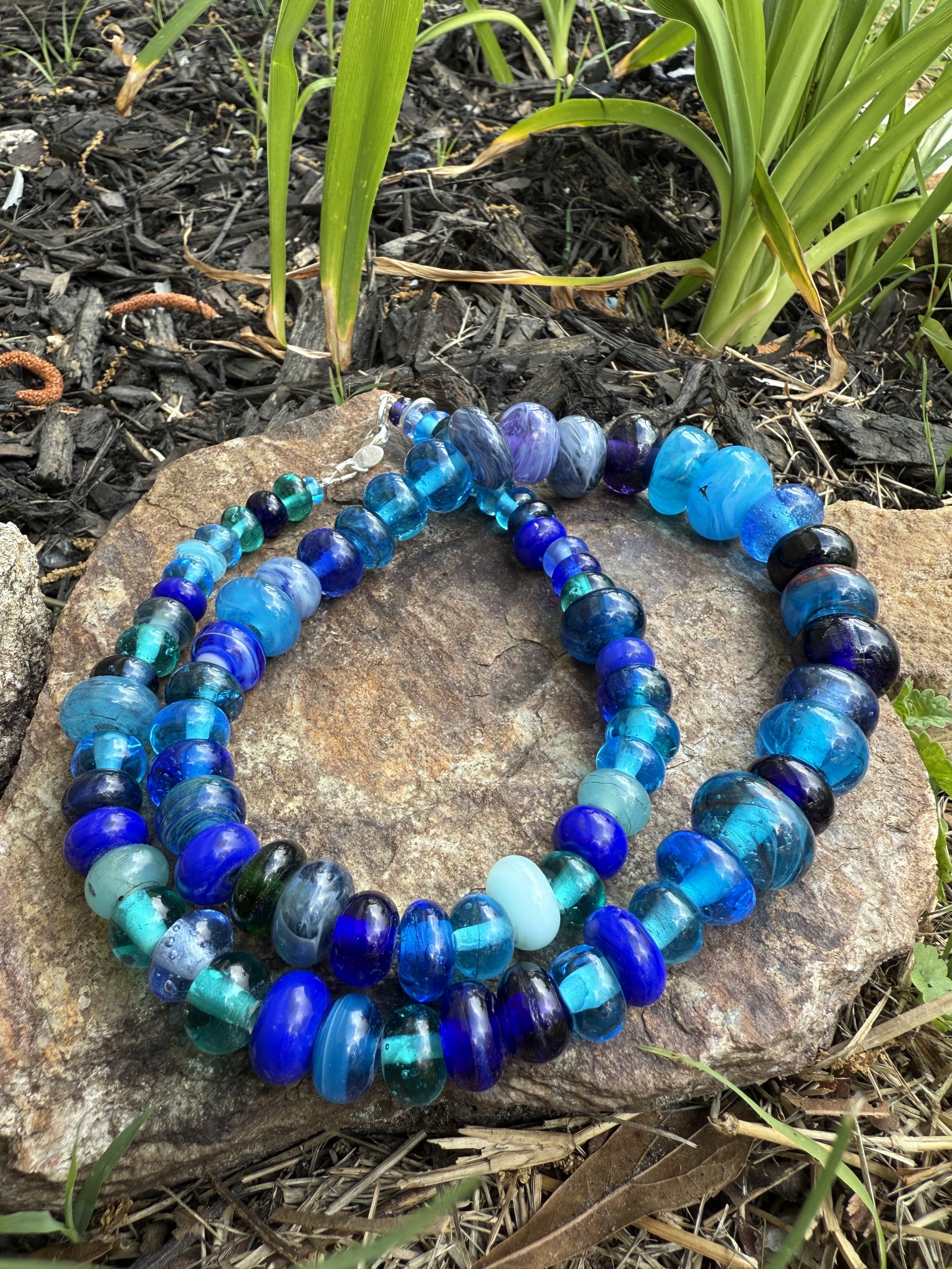
Olympia Cist Grave I 2000 BCE
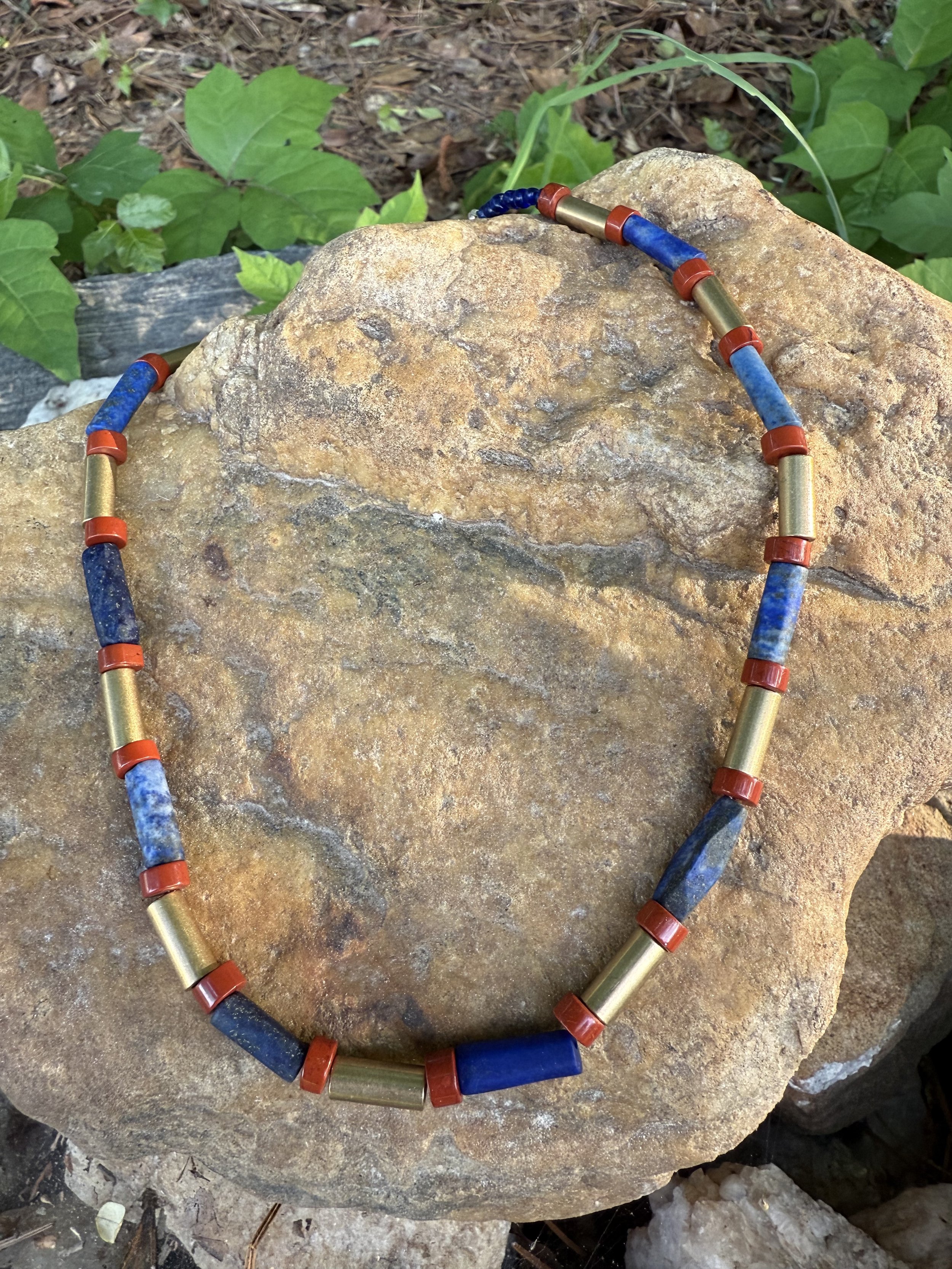
Old Babylonian period, 2000-1600BC From Ur. Original is Lapis Gold and Carnelian. Mine is Lapis, Brass, and Jasper.
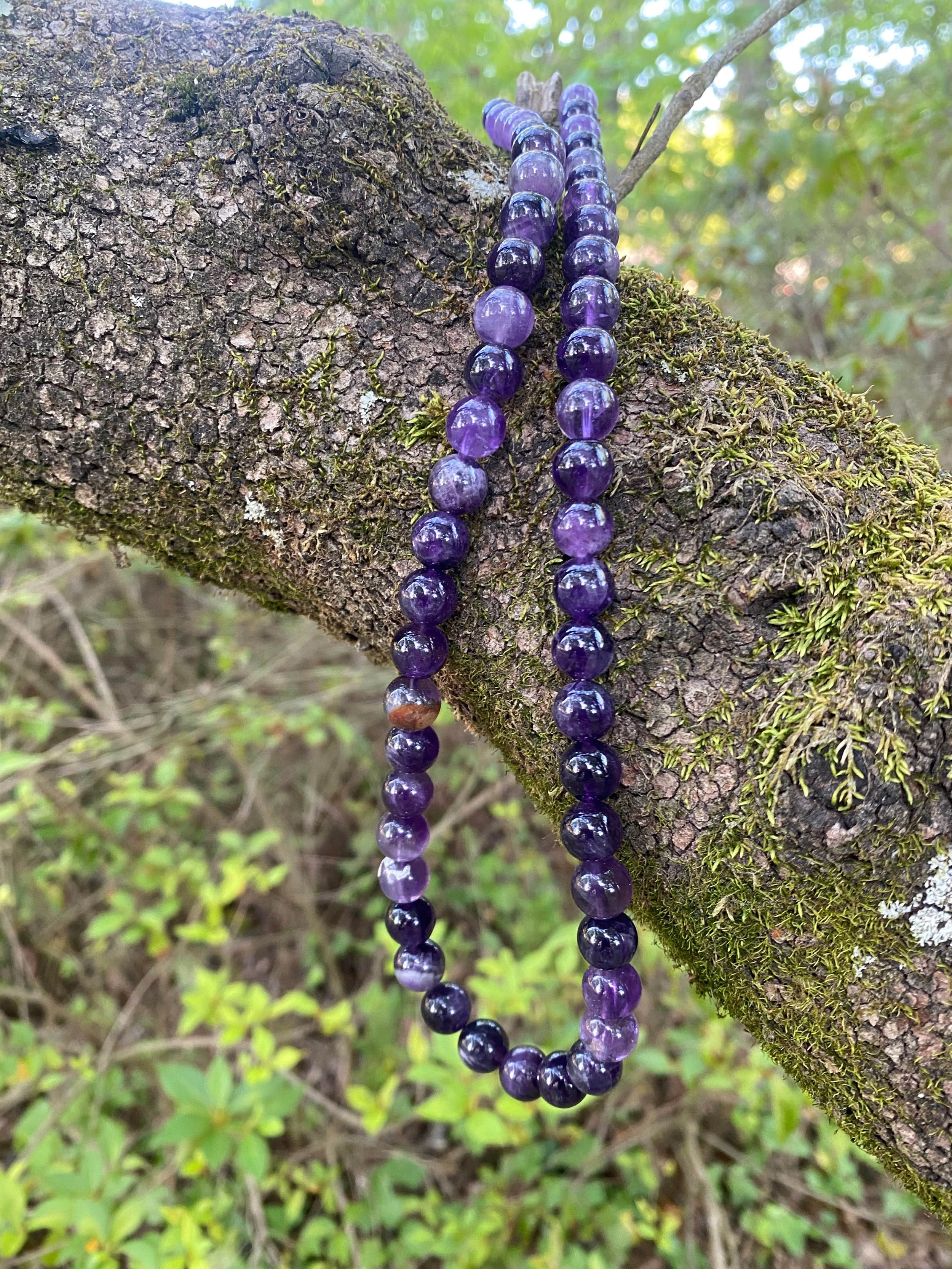
Inspired by 15th Century BCE Mycenaean Period Amethyst necklace from Pylos, Tholos tomb IV. 53 Beads.

Inspired by 15th - 14th C. BCE Mycenae, Chamber tombs 518 & 519, in Athens National Archaeological Museum, 6435, 6521.

Inspired by 14th - 13th Century BCE Mycenaean Paste Glass necklace from Mycenaean chamber tomb 58. 33 Melon Beads (Produced in Scrap Glass)
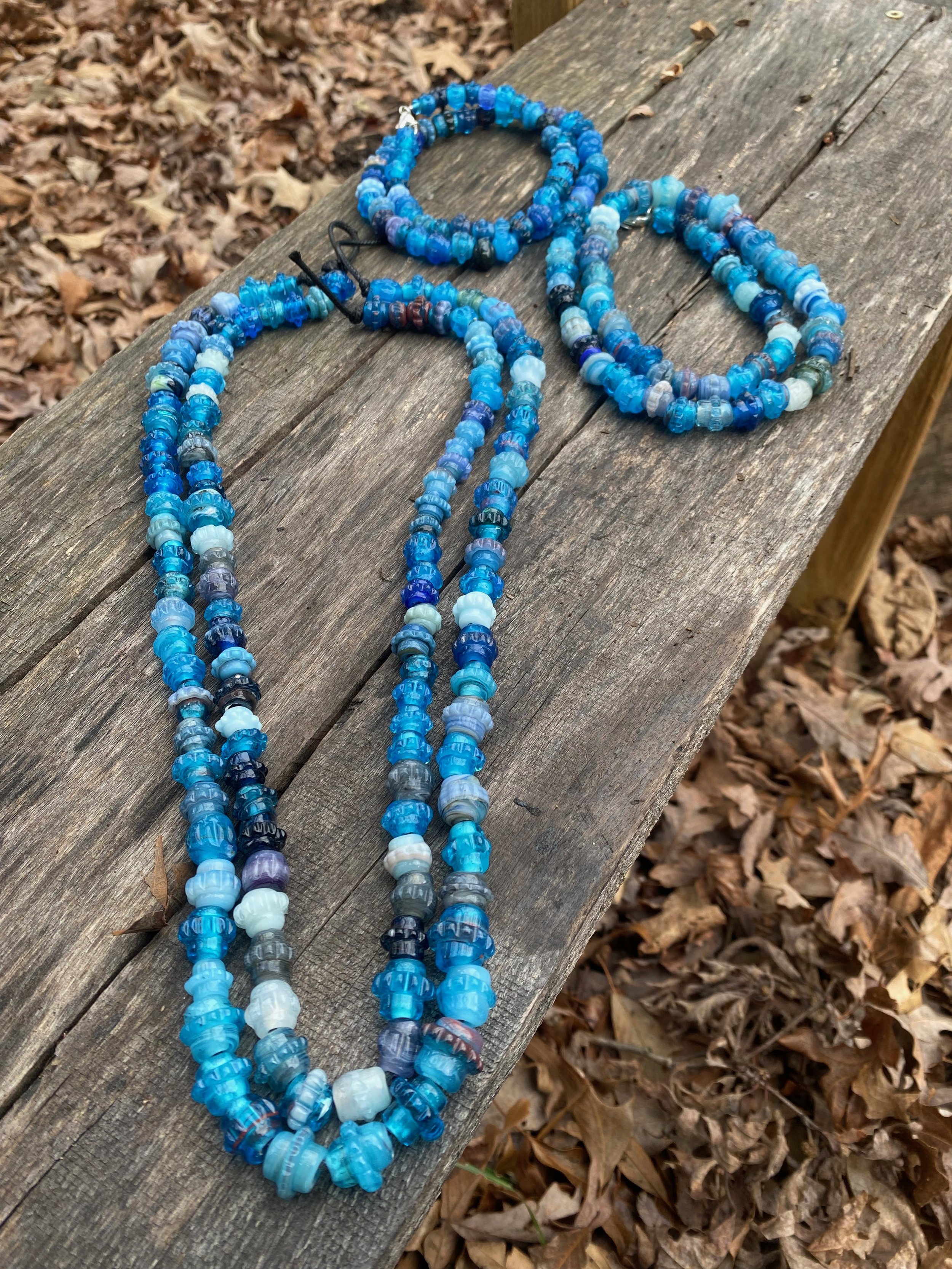
Inspired by a 14th to 13th Century BC Necklace made of Faience. This one is made of recycled stained glass and is arranged as two peaces instead of one. There are two sets depicted here. Original is in the National Archaeological Museum in Athens.
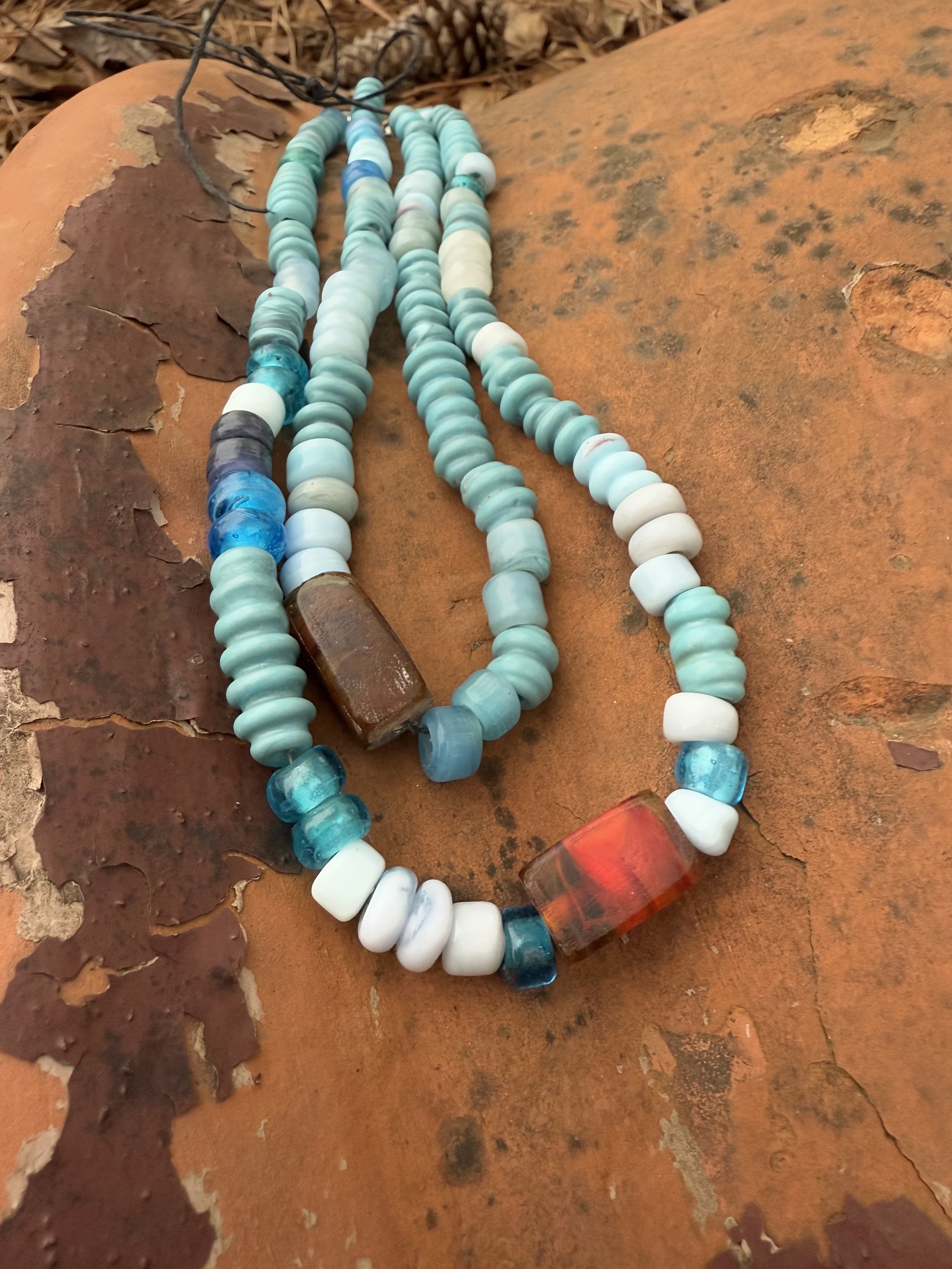
Mycenaean 1450-1400 BCE Original is Fiance and Sardio beads. I used Glass as substitute. The Focal Cut Beads is ruff cut without out the use of a lap.

Two Bracelets inspired by: Amethyst beads dating to 14000- 1180 BC Tomb of Aegisthus. Amethyst, Sardio, Red Jasper, Carneol, Agate Rhyton, 38, Sardio Beads, (1350-1300BCE), Asprochoma Tomb VII 39. Red Jasper Beade (1400-1300 BCE), Loupouno, Tomb VII. 40-41 Carneol beads (1300-1150 CE) House of the Oil Merchant, Artisans Quarter.47 Rock crystal beads (1400-1300BC) Loupouno, Tomb VII
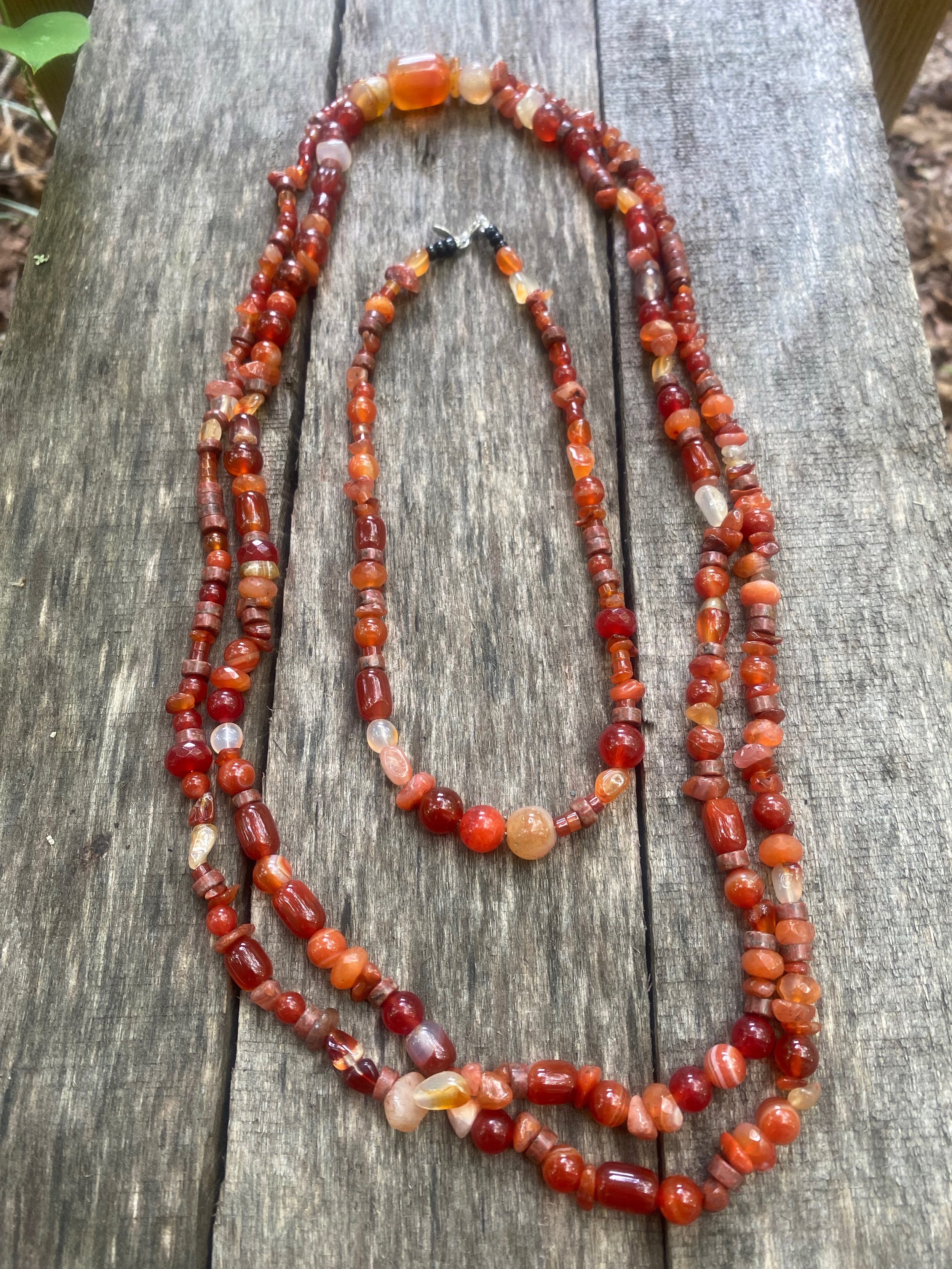
Inspired by a bead set on display in the Mycenae Archeological Museum. Made with carnelian, jasper, and agate to get close to the shape and colorations in the original.
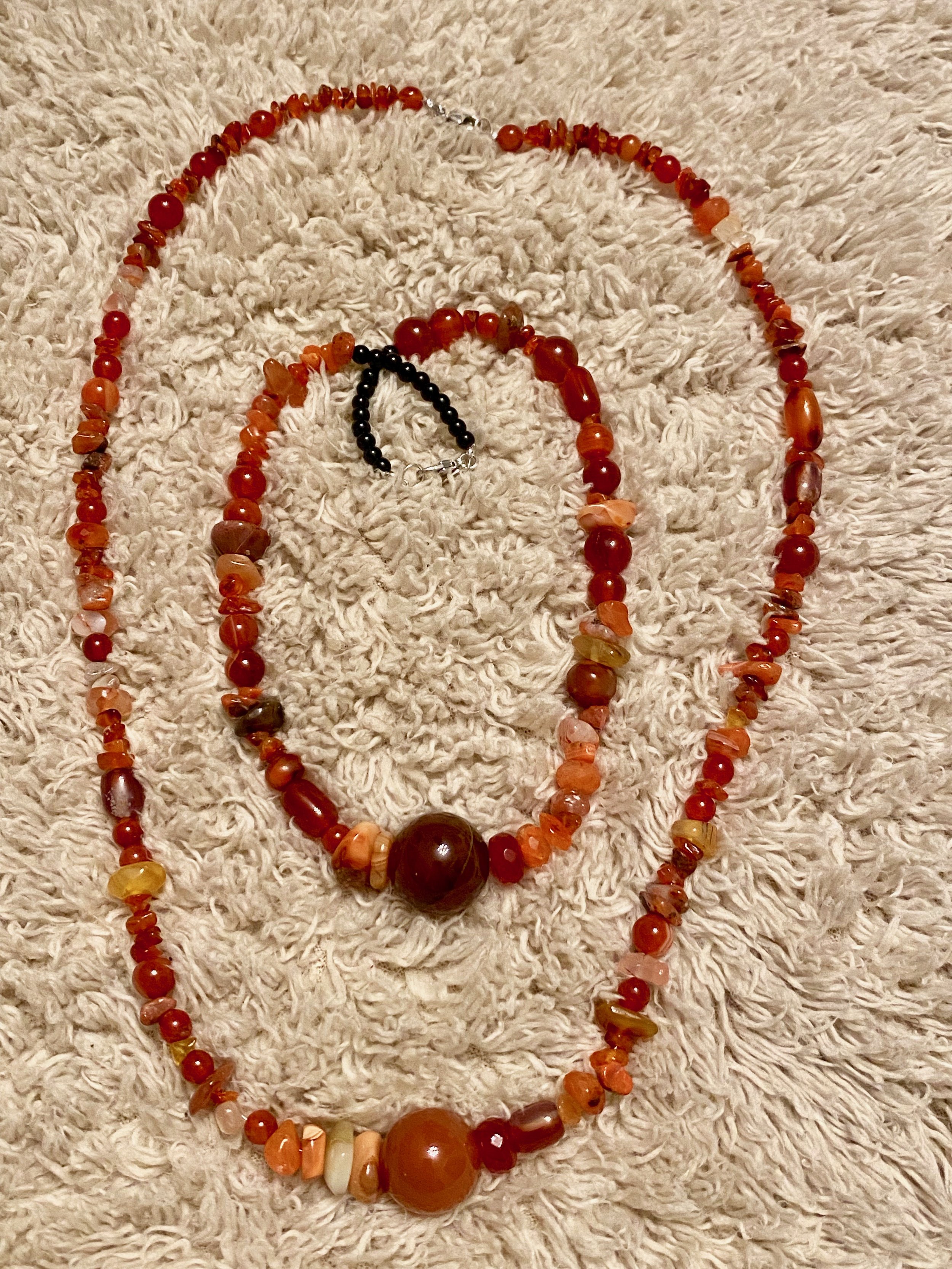
Inspired by a bead set on display in the Mycenae Archeological Museum. Made with carnelian and agate to get close to the shape and colorations in the original.
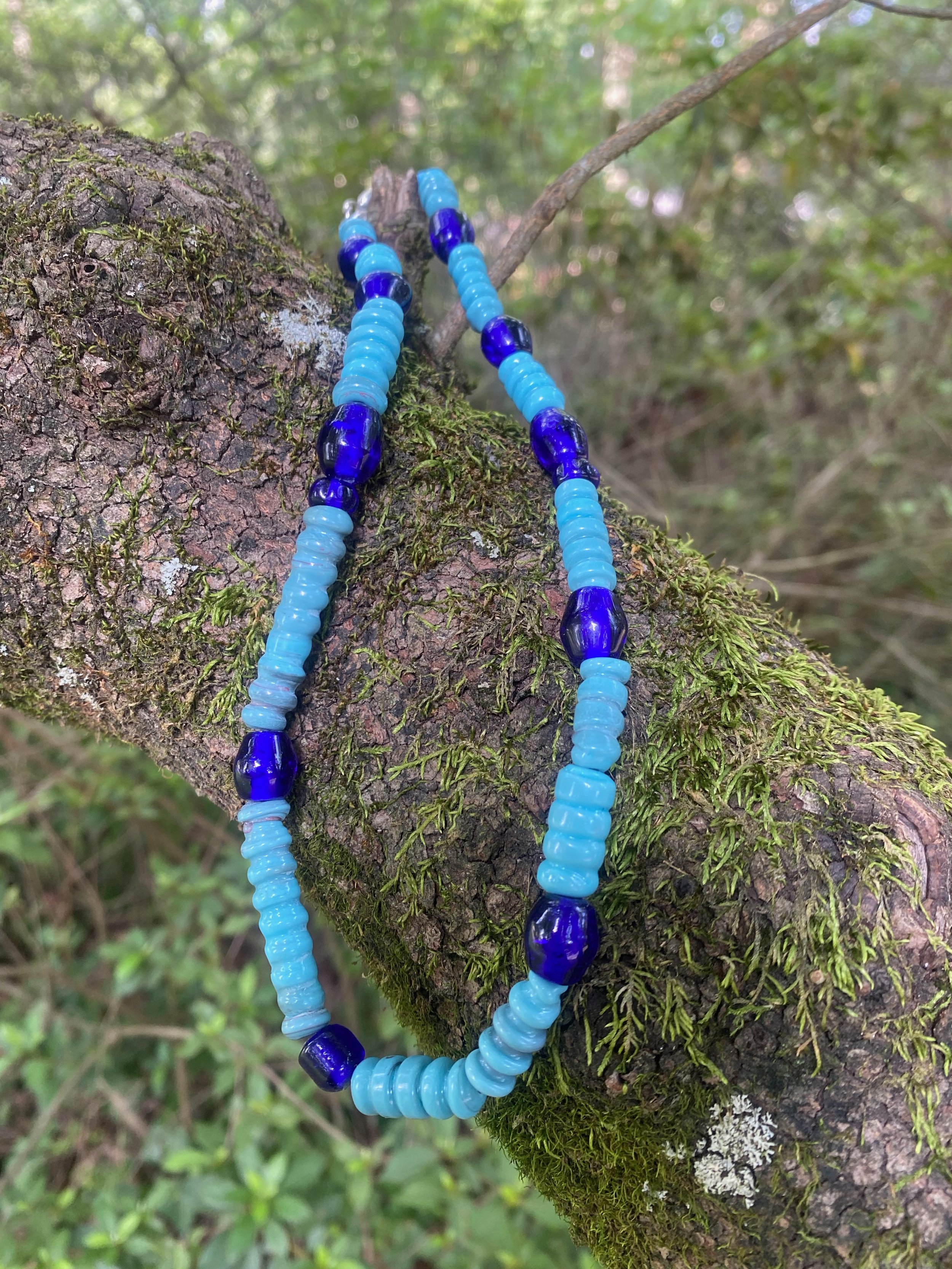
Based on beads on display at the Olympia Archeological Museum.
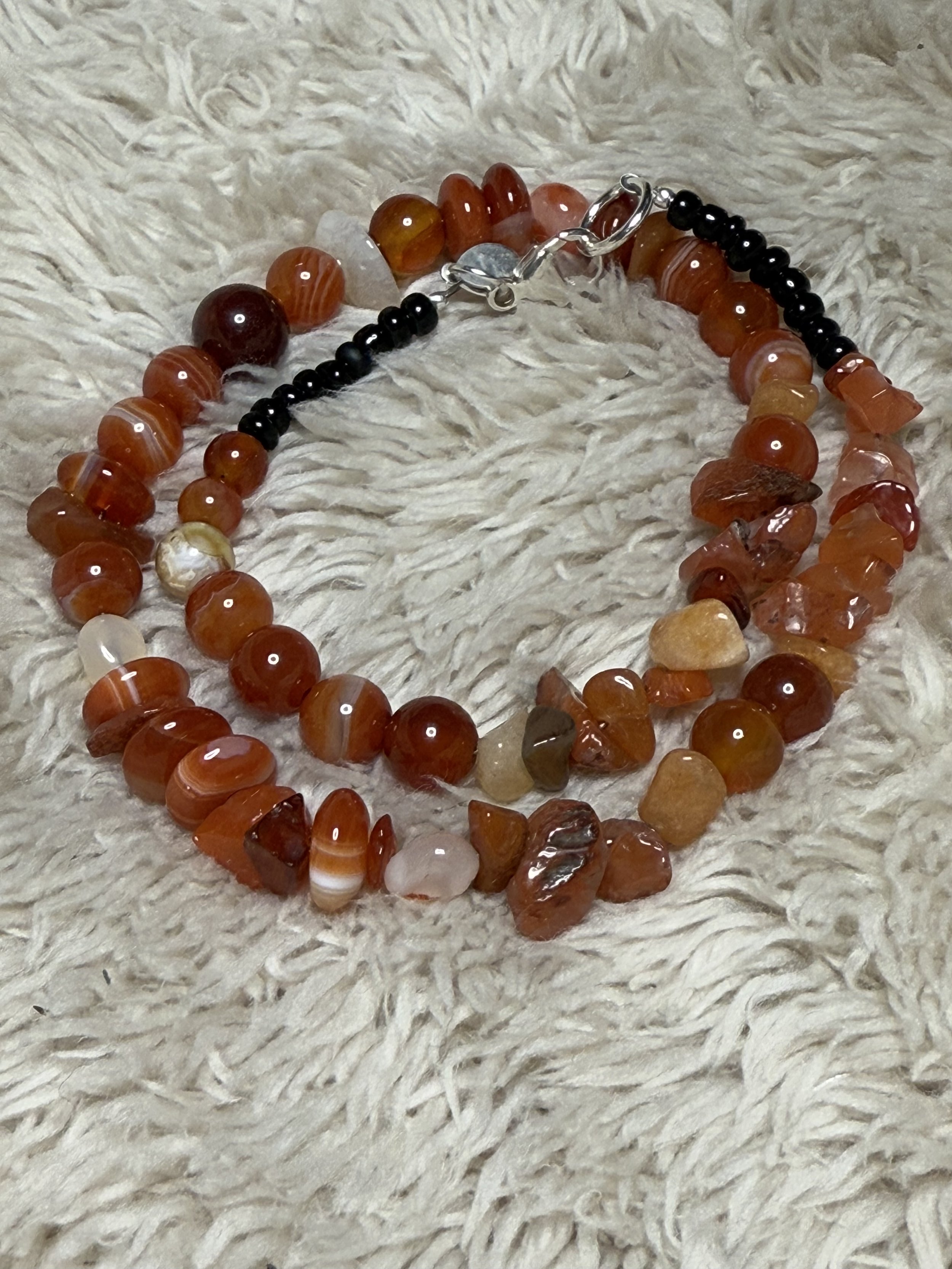
Egyptian Agate and Carnelian, Inspired by one at British Museum.
14th - 12th BCE (Late Bronze Age, made in Egypt, found in Denmark)

Beads from 600 to 250 BCE Eastern Mediterranean Carthage. Based on beads at the CMOG and jewelry inspired by them.
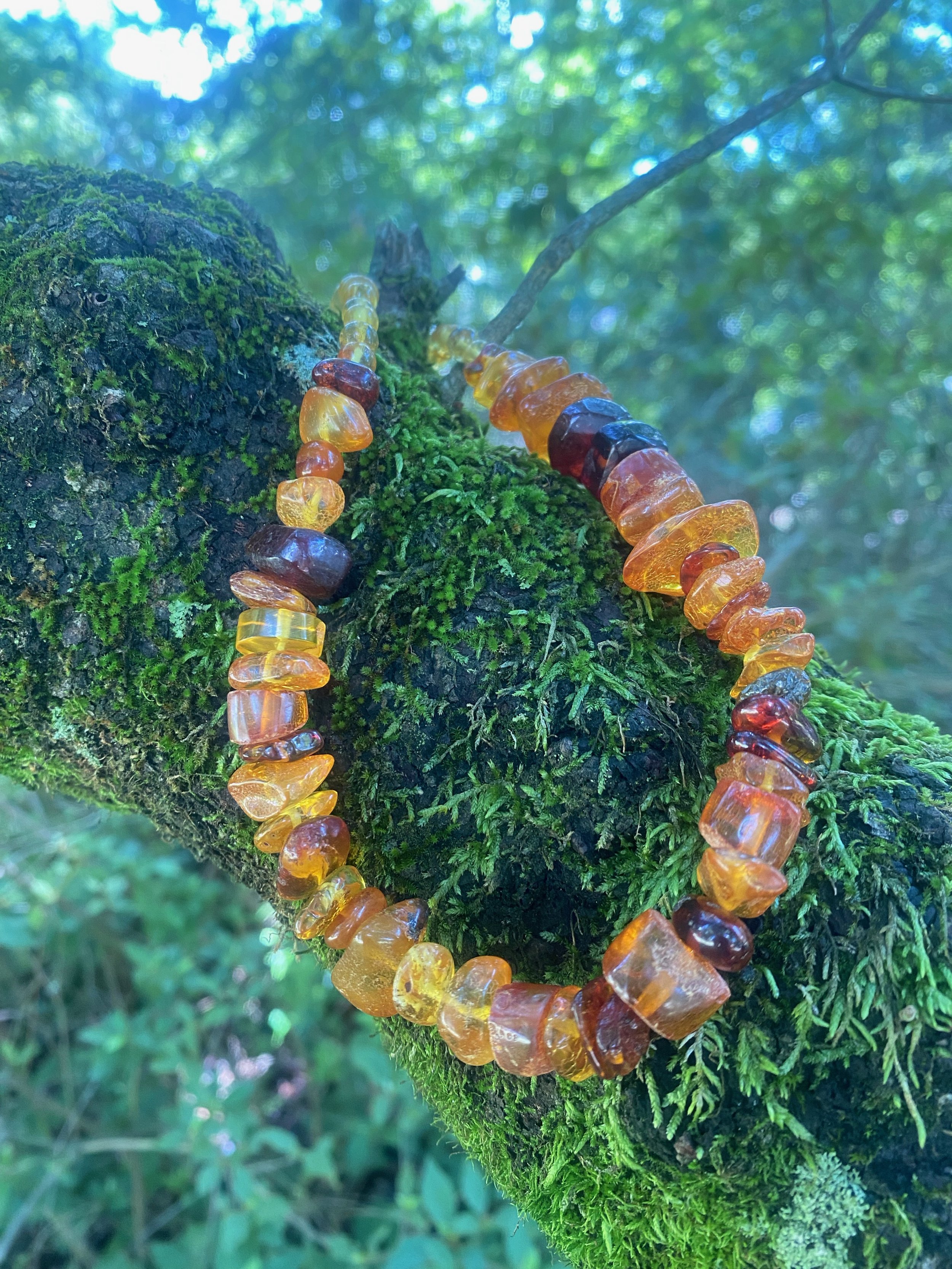
Inspired by 7th Cent. BCE Grave goods that included an amber necklace found in a model ship, on display at the Vatican Museum. The amber used in this piece is Baltic Amber.
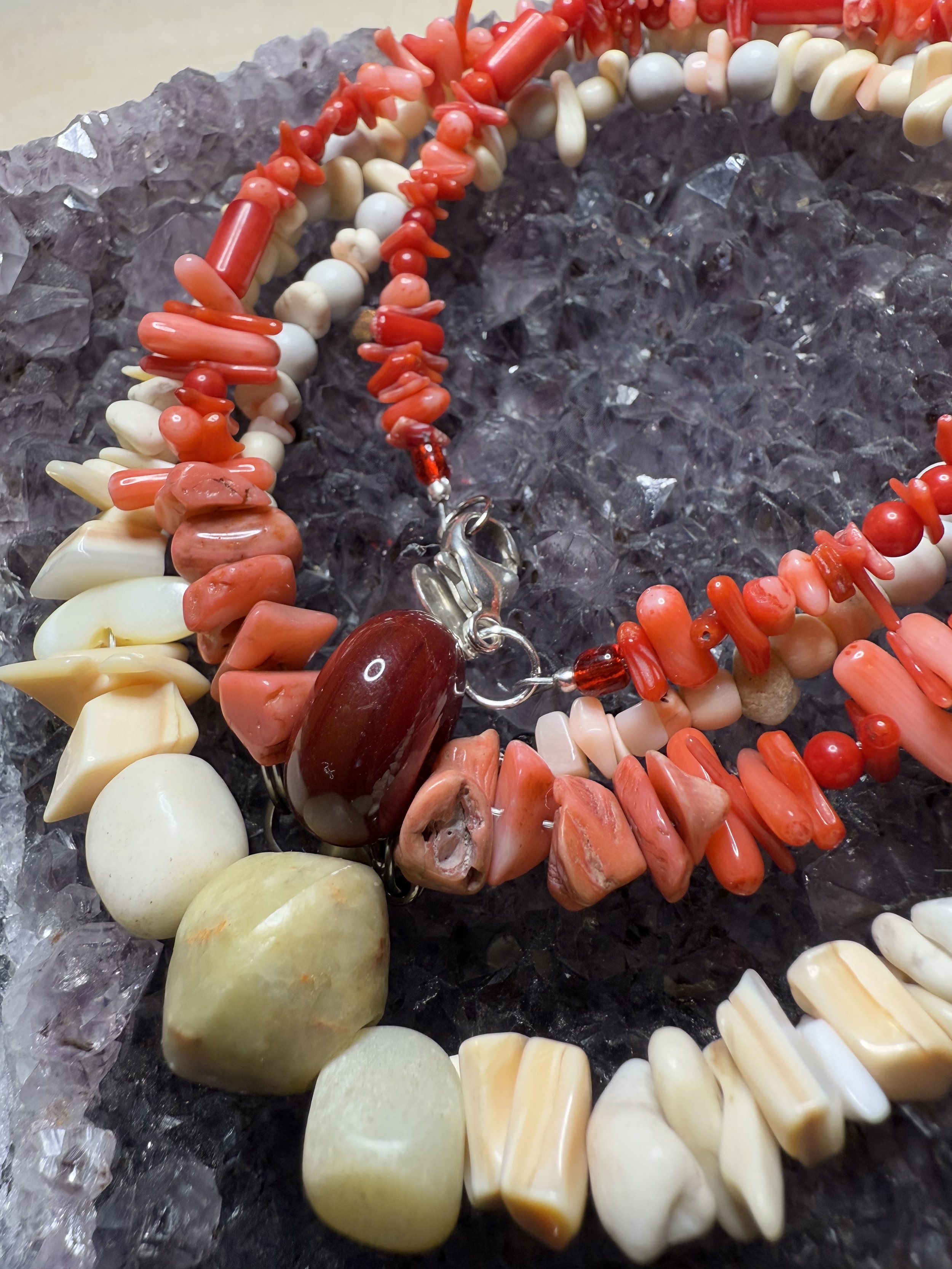
Two Interpretations Celtic Coral Necklace BCE-CE transitional. Original is faded Coral on Display in British Museum. This is done Coral and Simulated Coral with Glass Focal as Coral Sub. Also done ins Shell, Pearl, and Stone to simulate how the Original now looks.
Norse Viking Strands

Two interpretations of a Baltic Amber Strand, 800s CE, on display as a part of the Vikings Begin traveling exhibit.
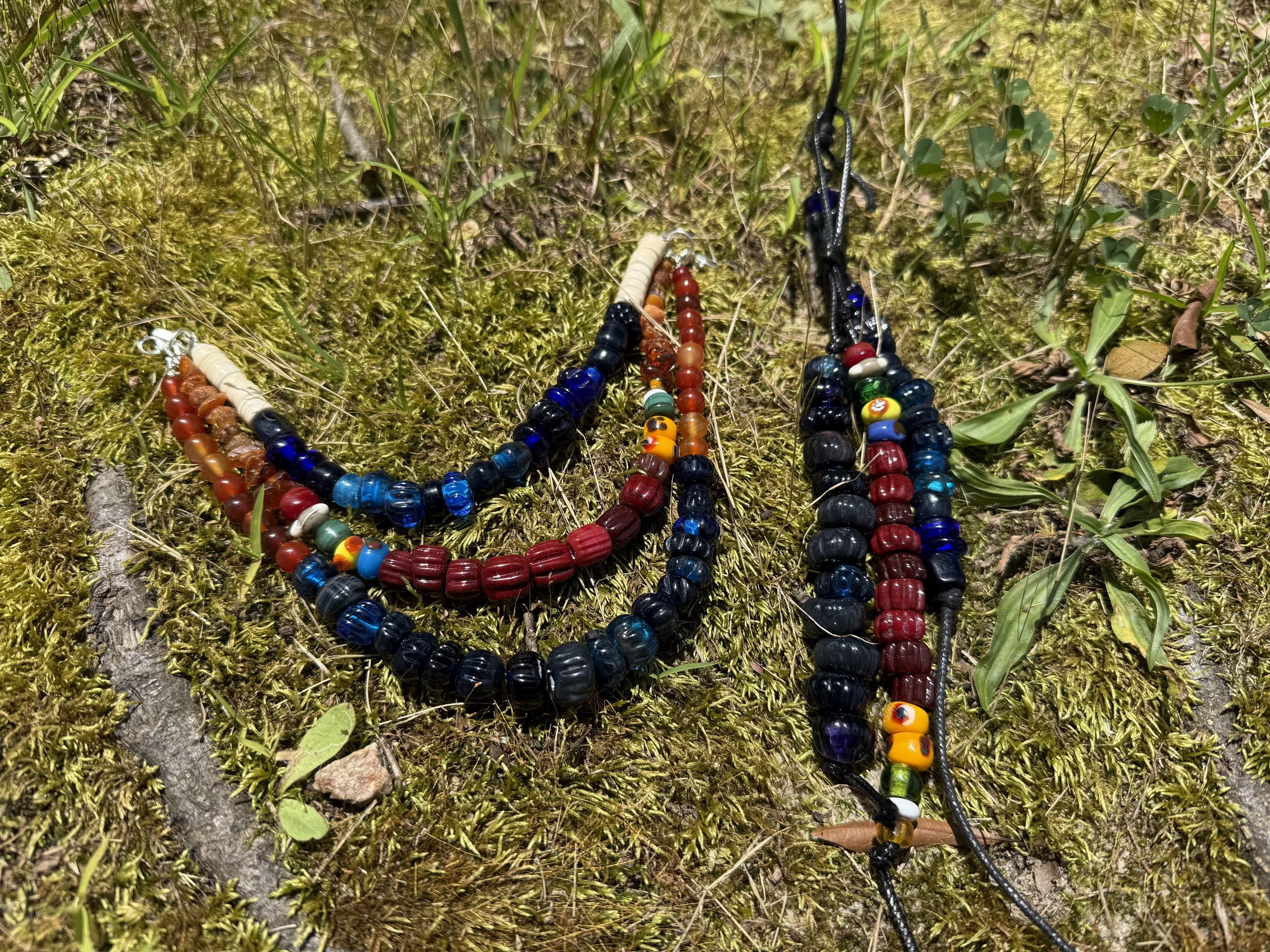
Glass beads: These glass bedes were produced from imported materials. One of the Beds is mad of amnber. (British Museum)
![Inspired by Strands featured in Viking age beads from Iceland, [January 2010, Authors: Elín Ósk Hreiðarsdóttir, Instatute of Arceology Iceland]](https://images.squarespace-cdn.com/content/v1/62915dd704087138499601d0/d4466a6a-de62-4153-9c56-63919d248dd4/Iceland.jpeg)
Inspired by Strands featured in Viking age beads from Iceland, [January 2010, Authors: Elín Ósk Hreiðarsdóttir, Instatute of Arceology Iceland]
![Inspired by strand featured in Viking age beads from Iceland, [January 2010, Authors: Elín Ósk Hreiðarsdóttir, Instatute of Arceology Iceland]](https://images.squarespace-cdn.com/content/v1/62915dd704087138499601d0/a2294407-abf7-4b17-ae99-c1abb1bdc004/Iceland.jpeg)
Inspired by strand featured in Viking age beads from Iceland, [January 2010, Authors: Elín Ósk Hreiðarsdóttir, Instatute of Arceology Iceland]
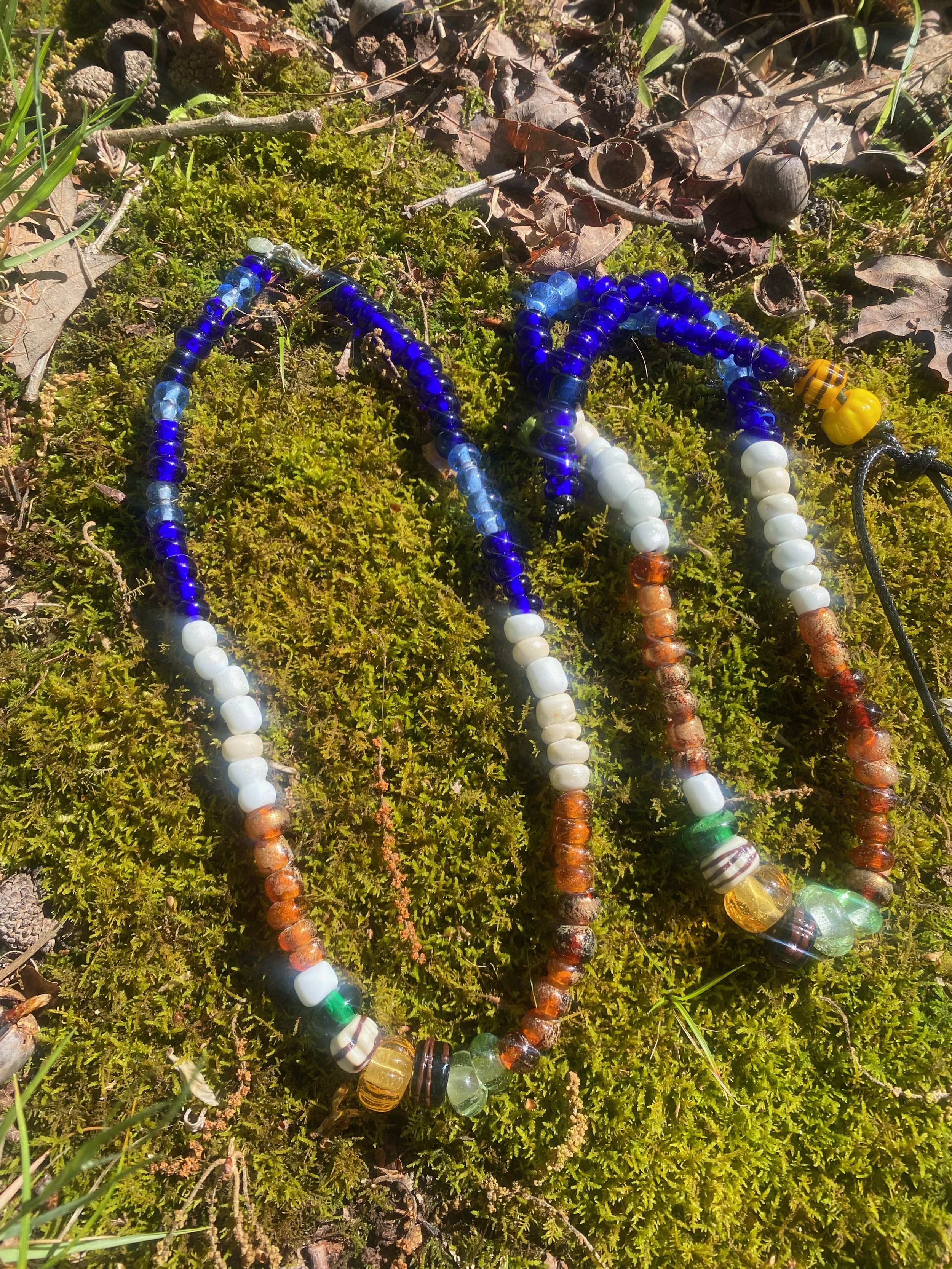
Based on one in the National Museum of Iceland 900's.
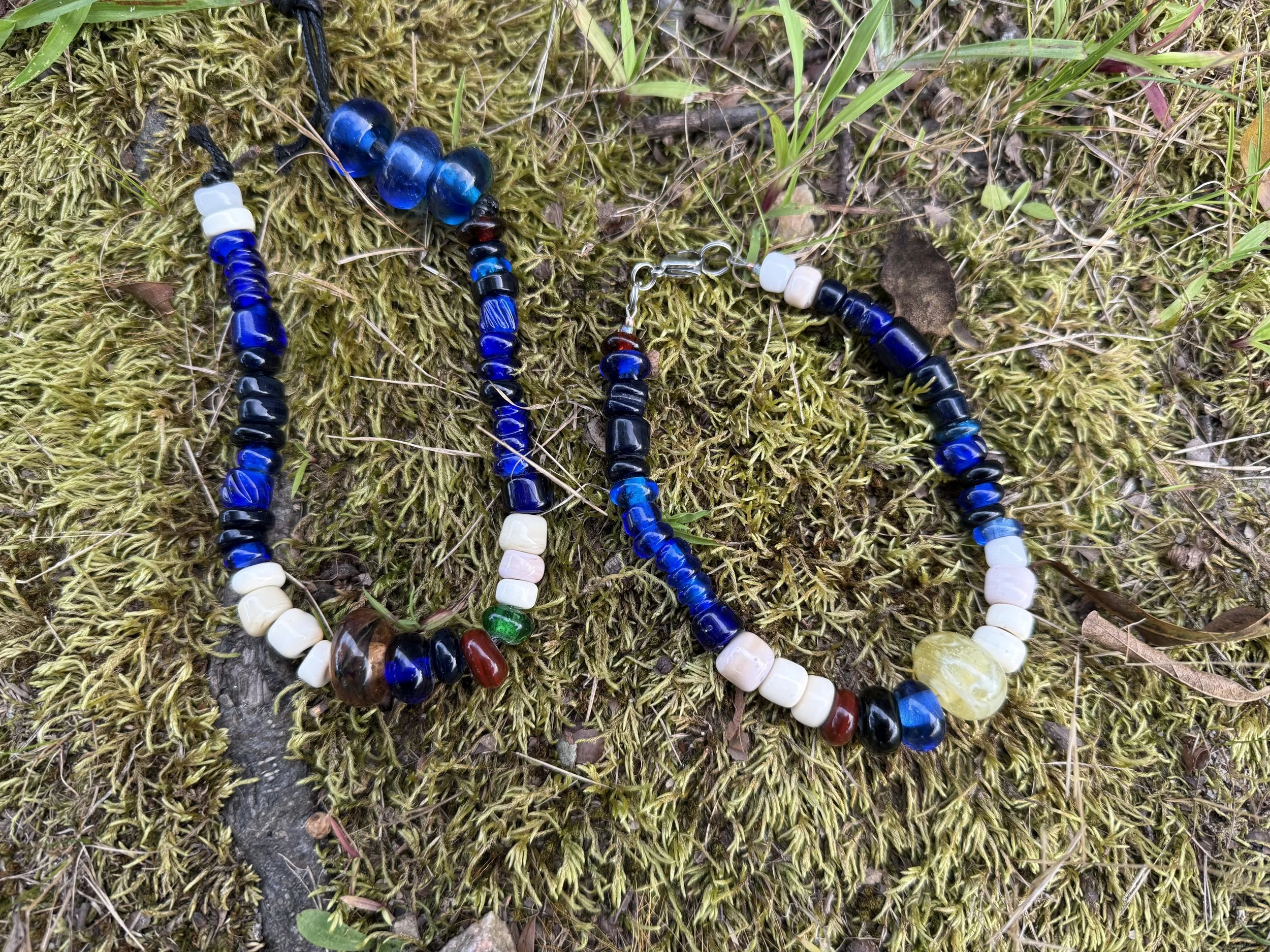
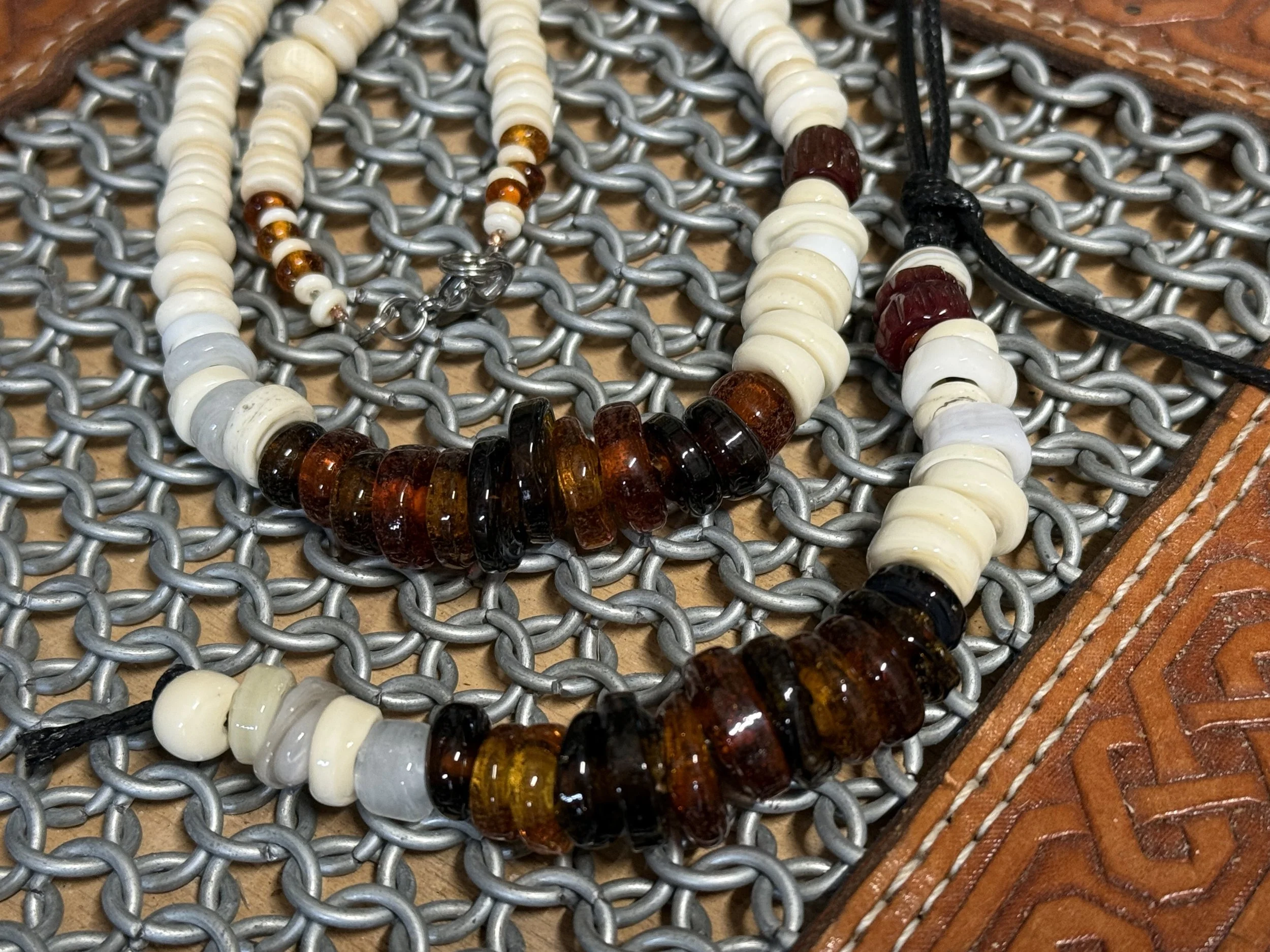
Bead Strands from Ribe
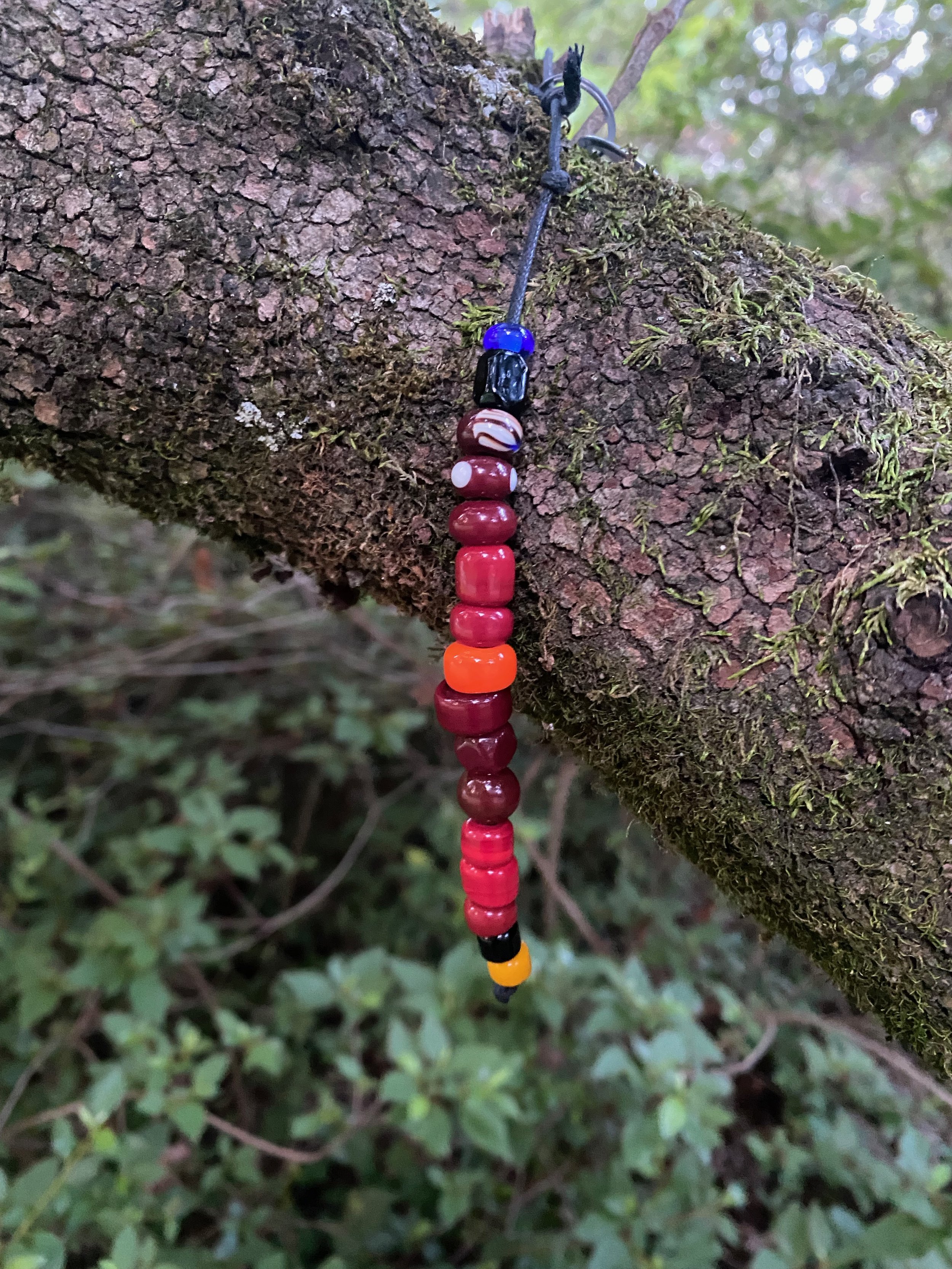
Late Roman Iron Age (Ribe)
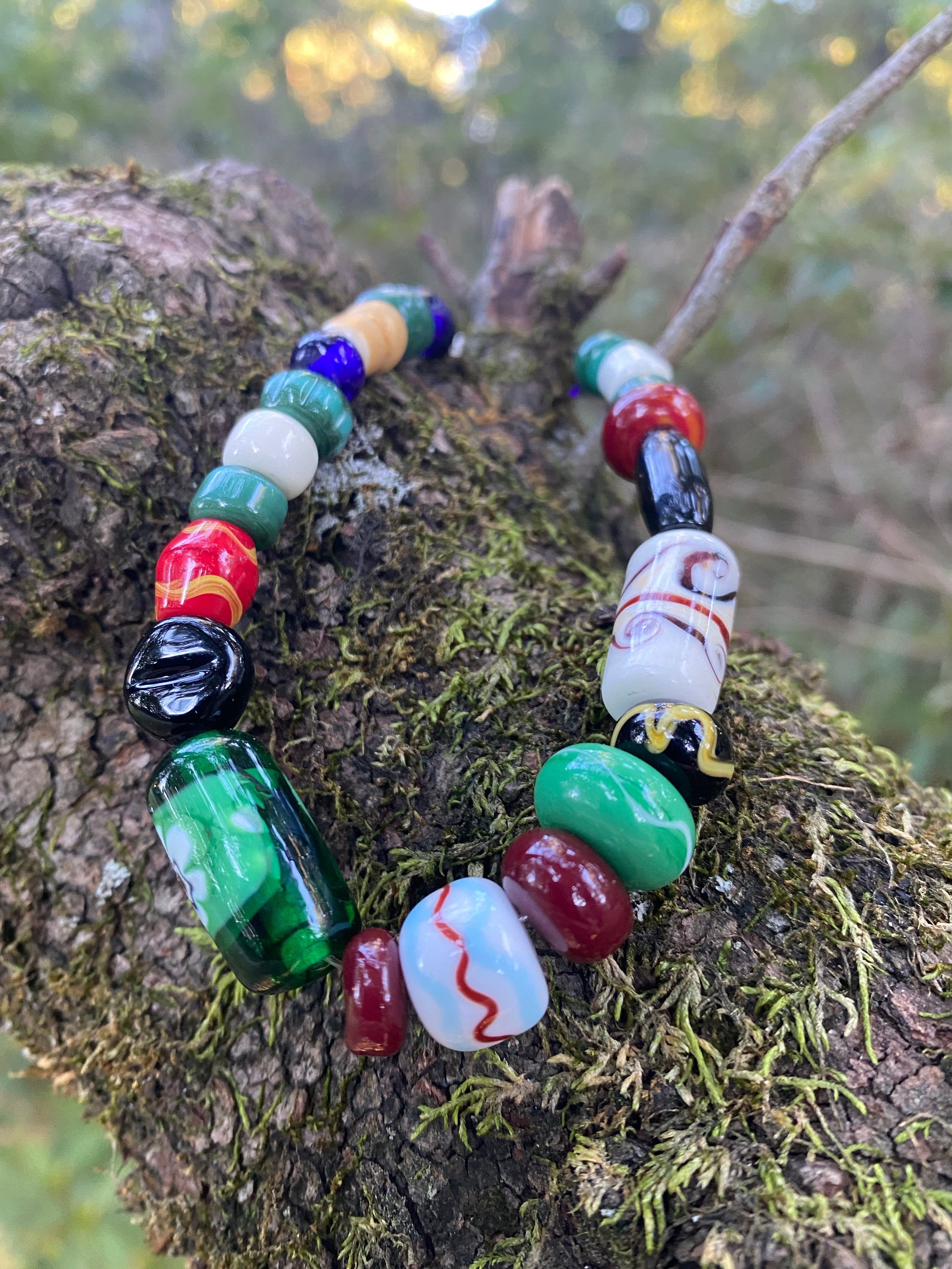
Late Roman Iron Age Strand (Ribe)
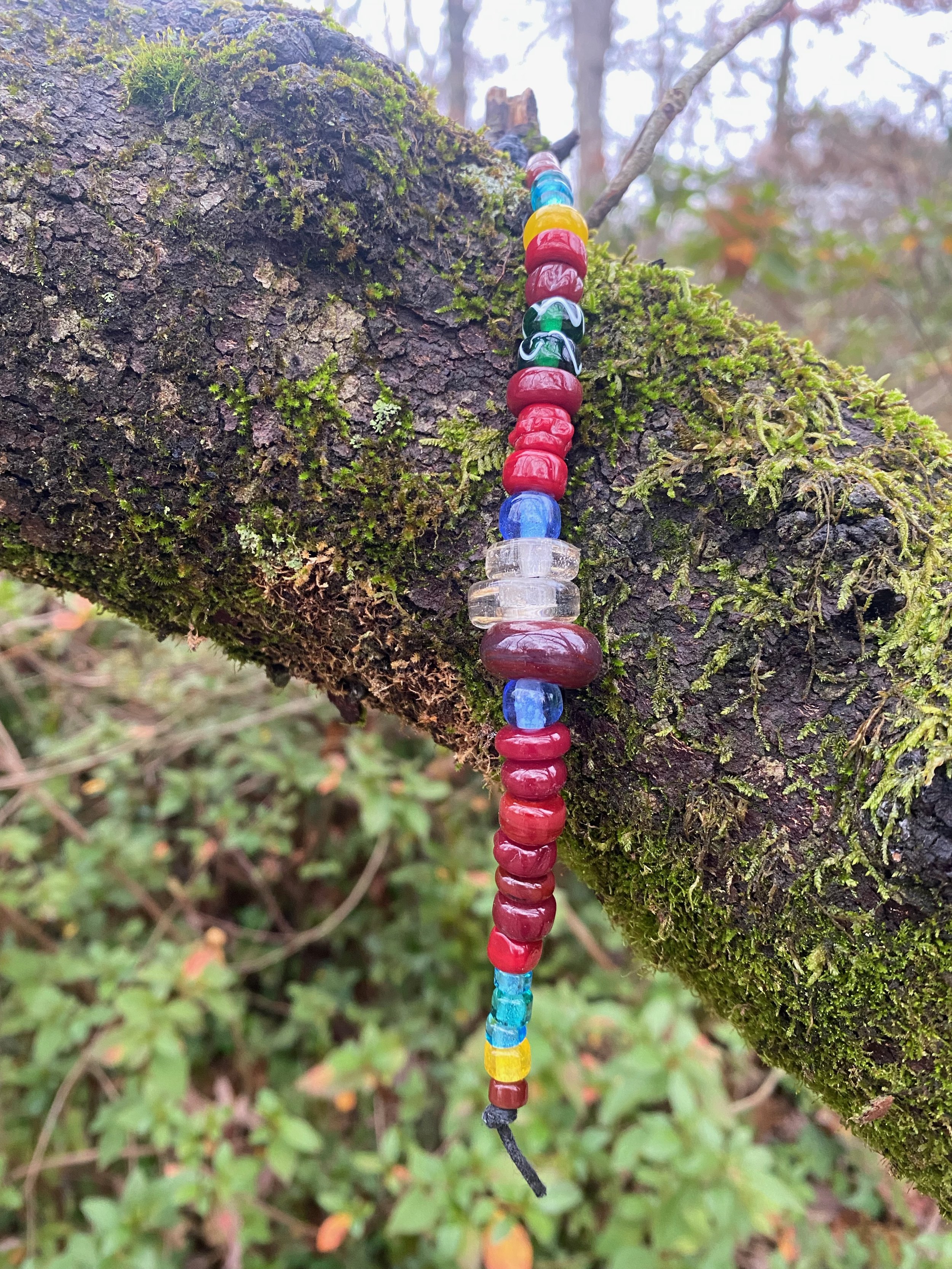
Late Roman Iron Age, C2
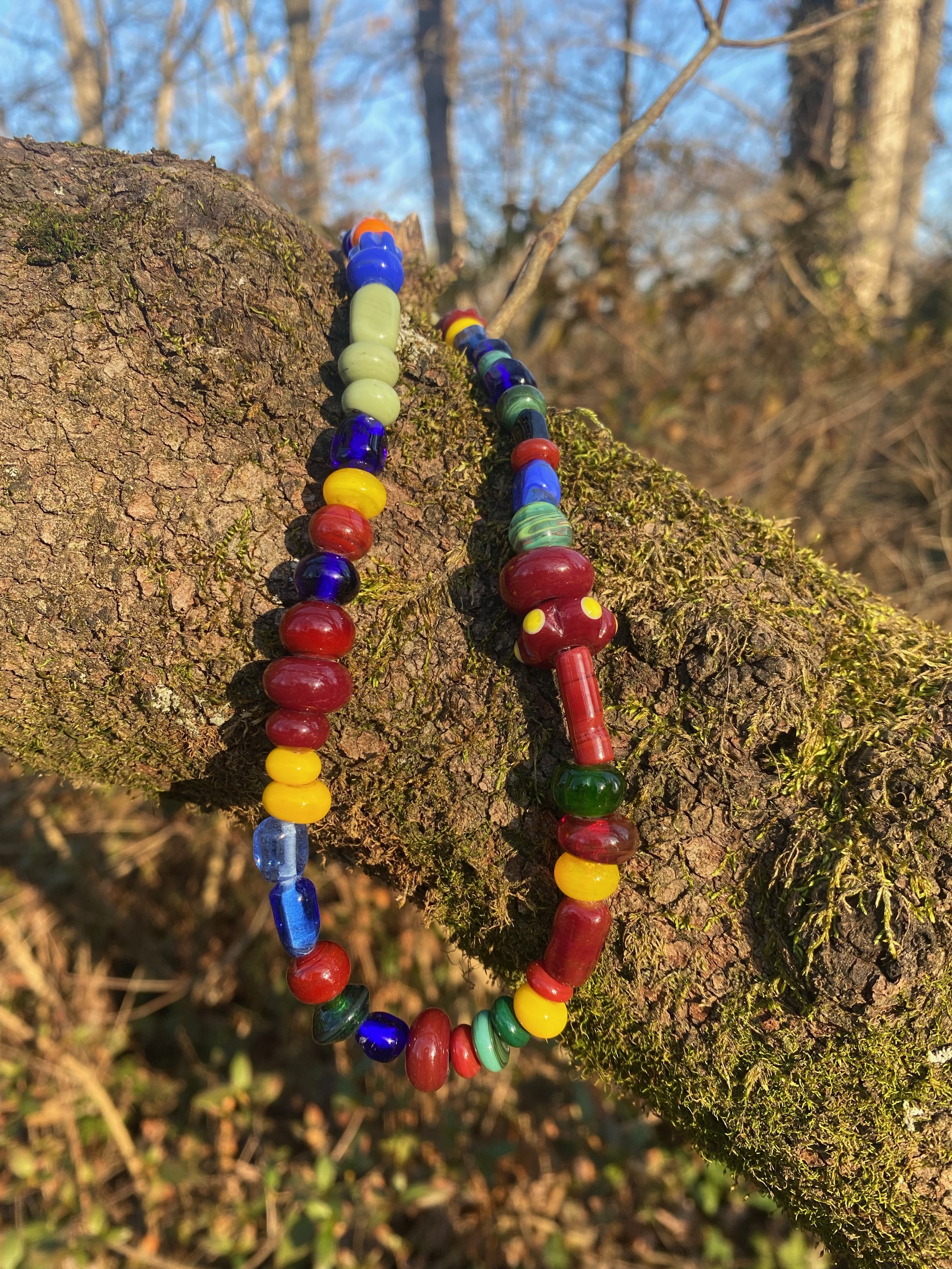
Late Roman Iron Age, C3
Late Roman Iron Age
Inspired by JOURNAL NUMBER Object ID 200271892 Grave CP glass, Late Roman Iron Age
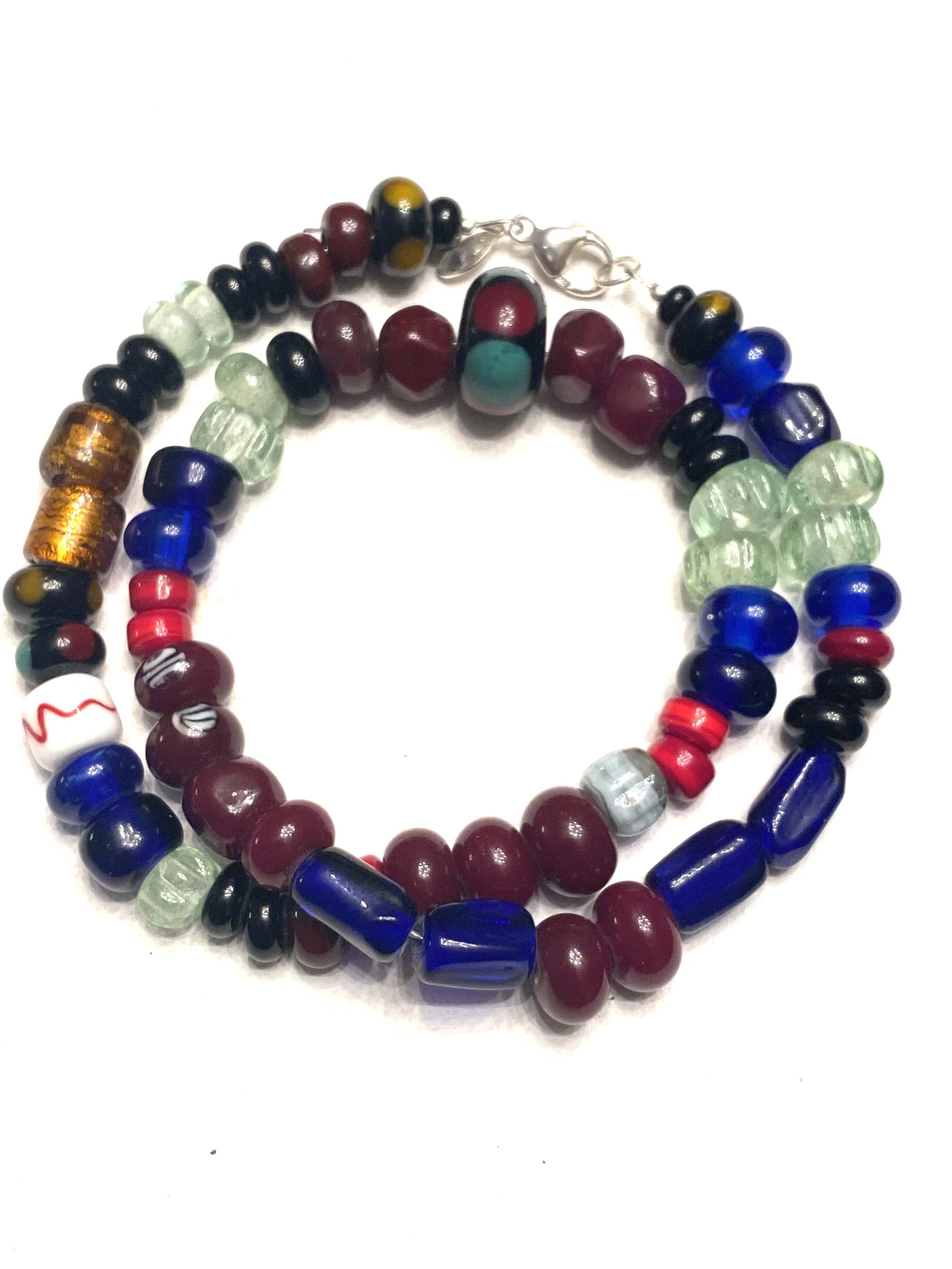
Iron Age (Ribe)
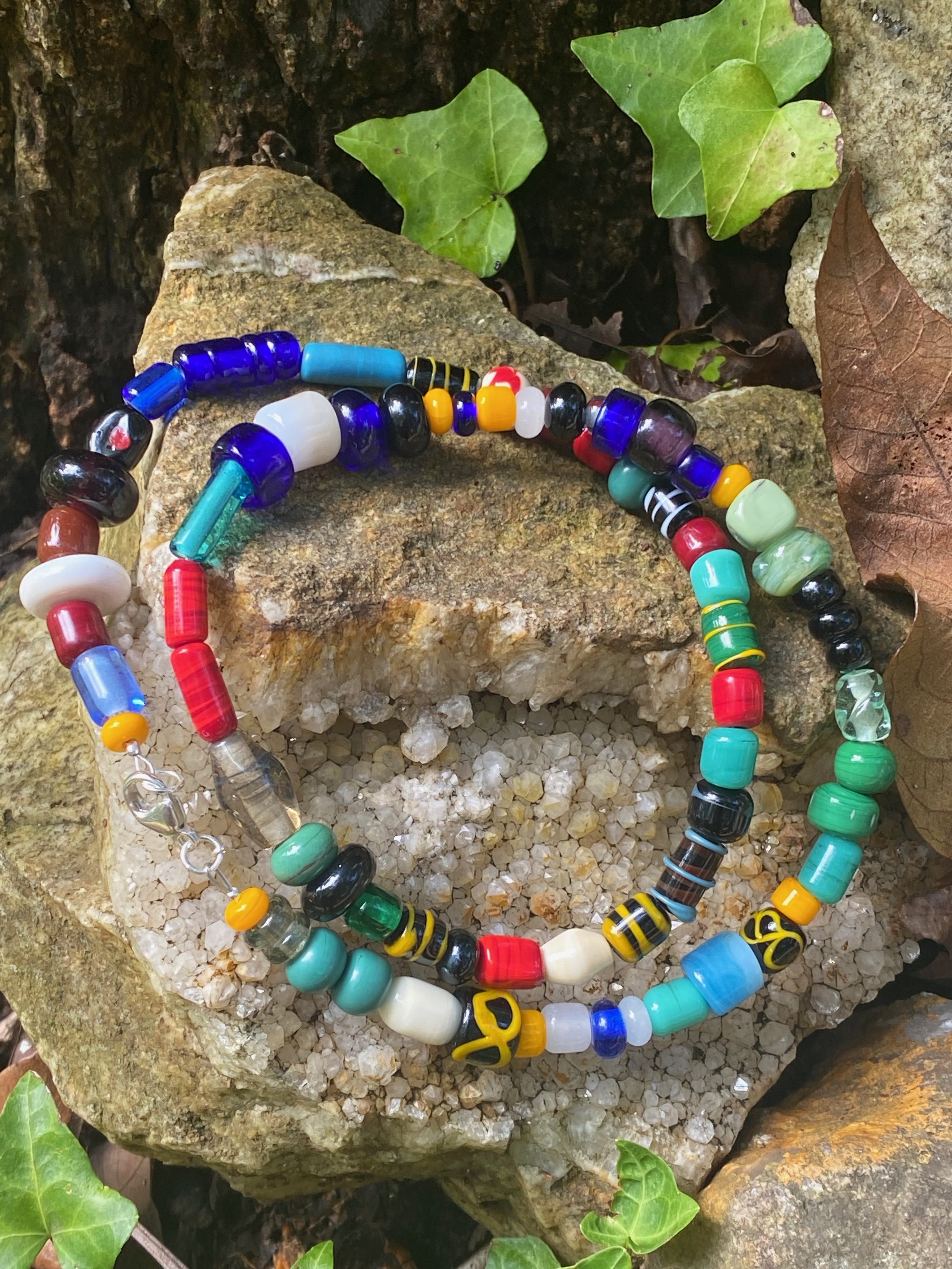
Younger Germanic Iron Age (Ribe)
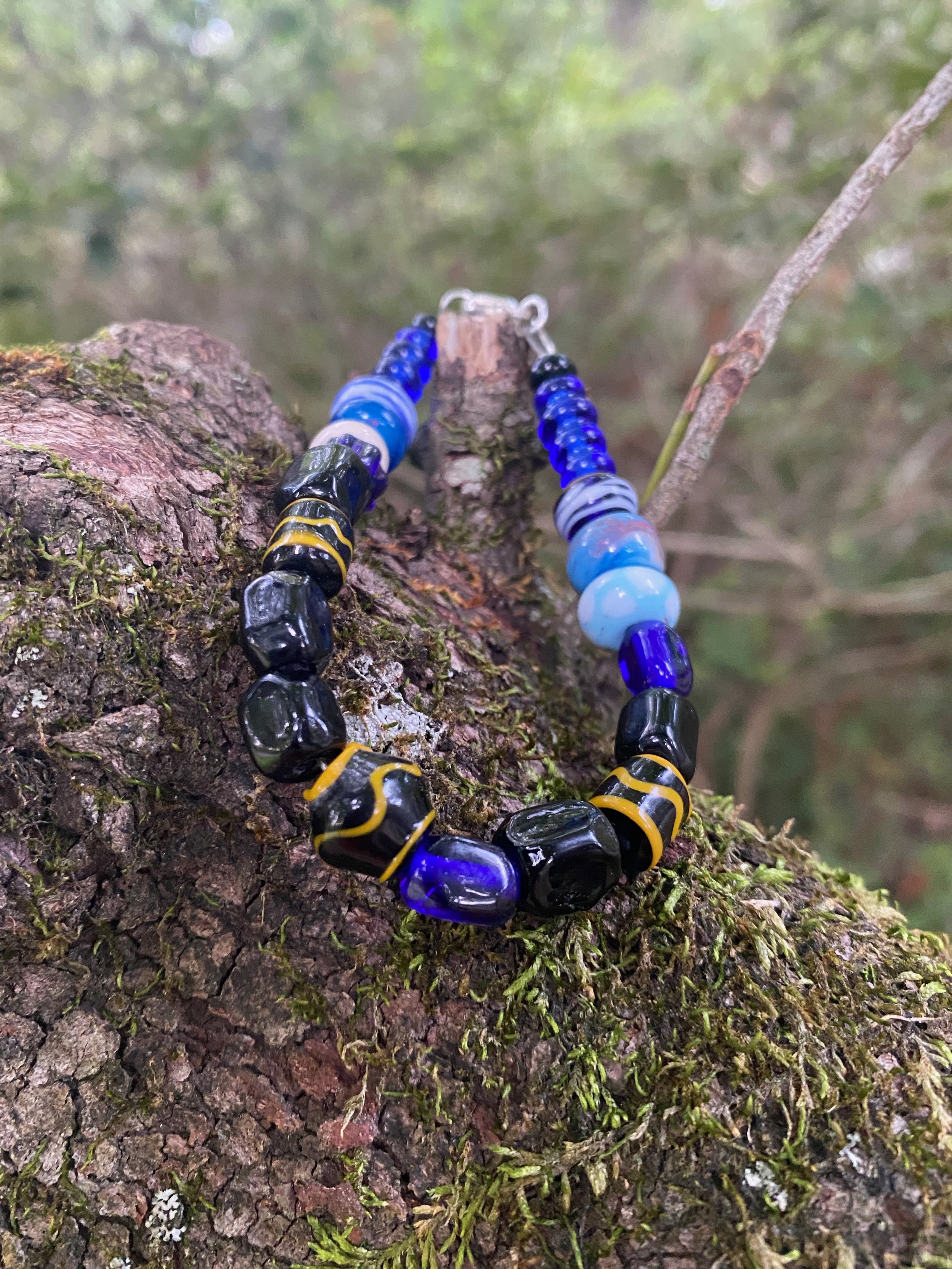
Viking Age (Ribe)
Viking Age Grave B (Ribe)
Viking Age
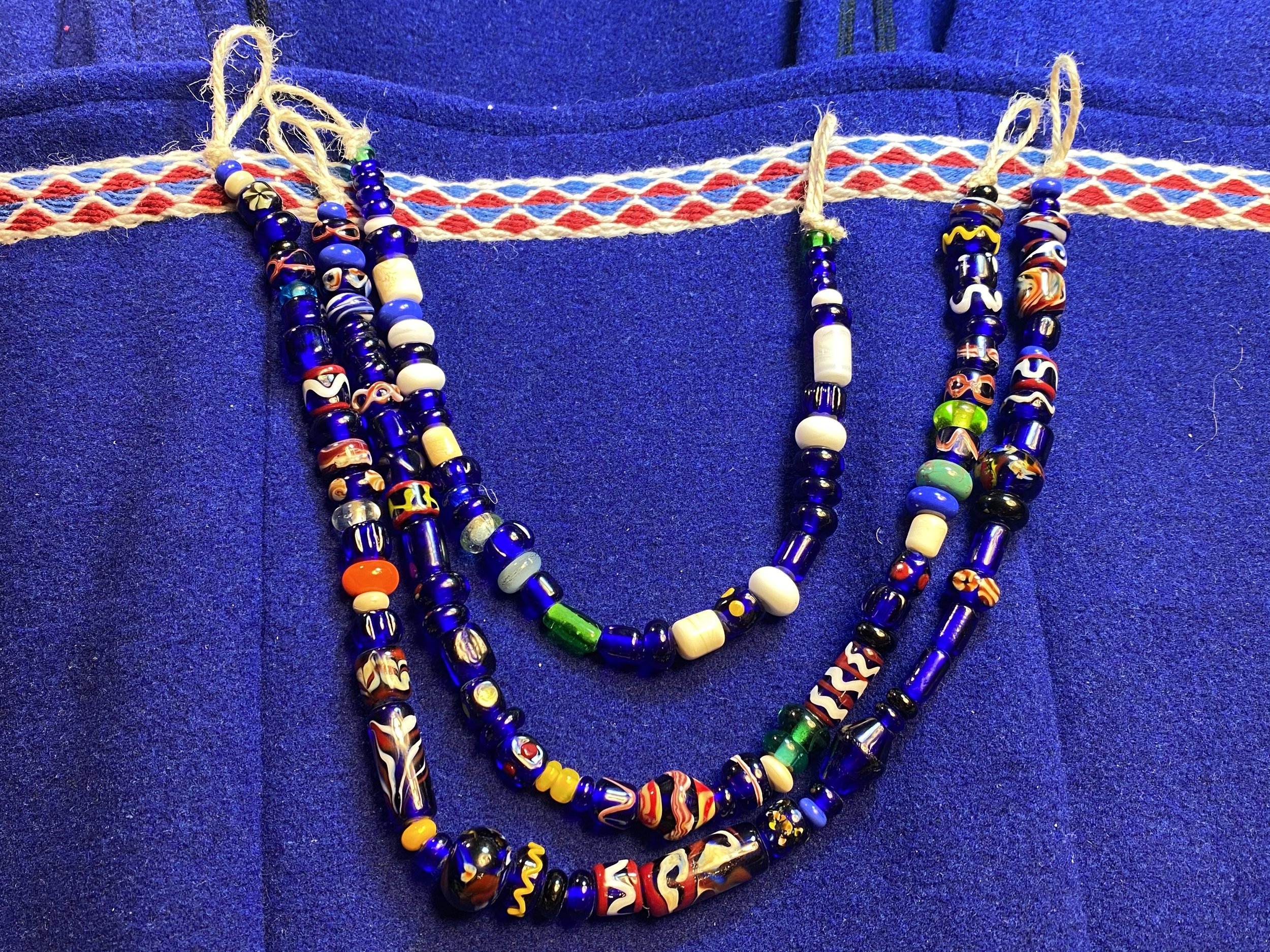
Set of Three (Bead Maker From Ribe)

Wasp Bead Strand (The Bead Maker From Ribe)
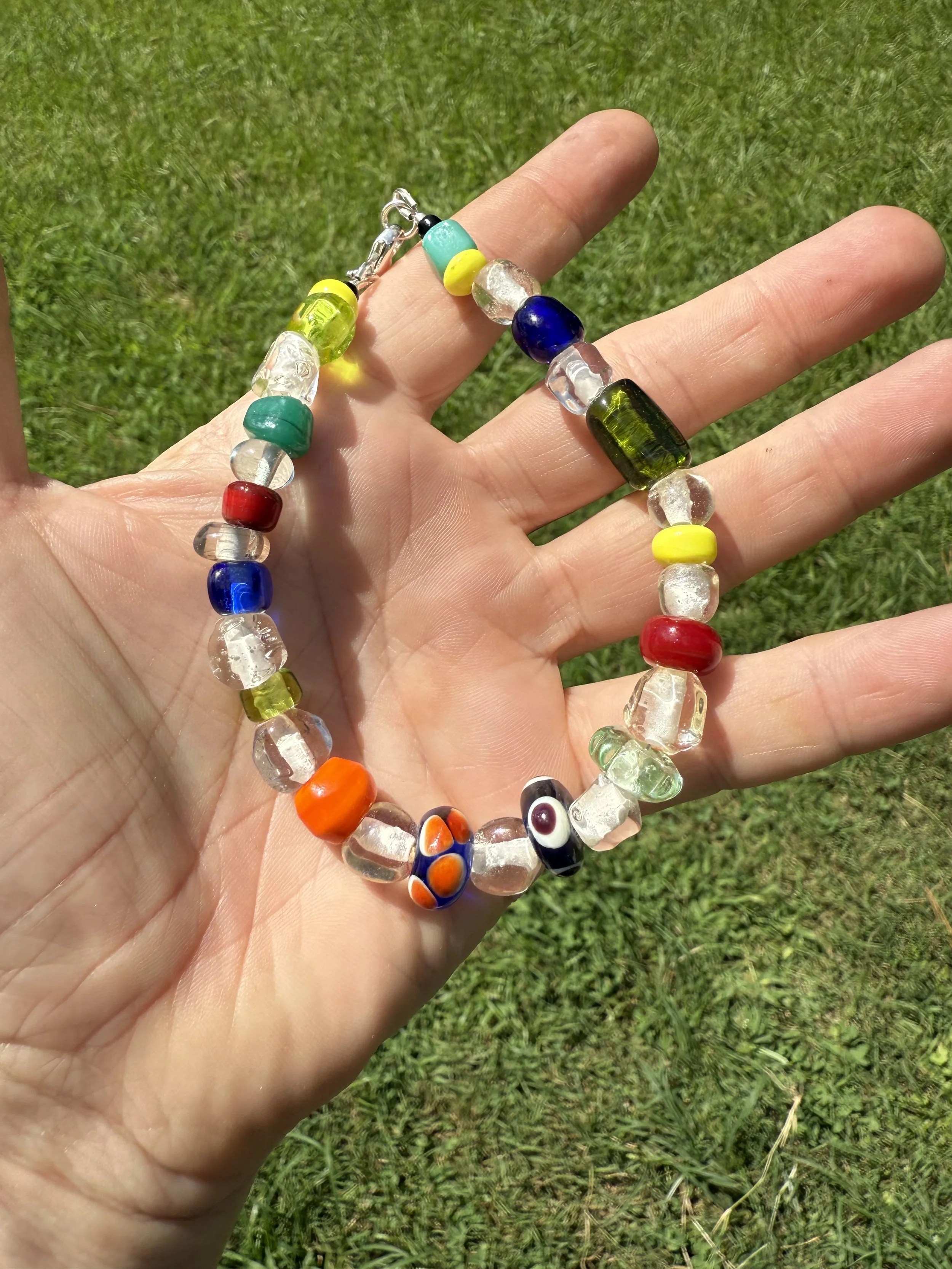
Coloured glass beads, Bornholm, Denmark 700-1000 CE
Birka Strands
Birka 464 two different interpretation of same beads.
Birka 550 with expanded interpretation
Birka 508 Interpretation
Birka 508 interpretation
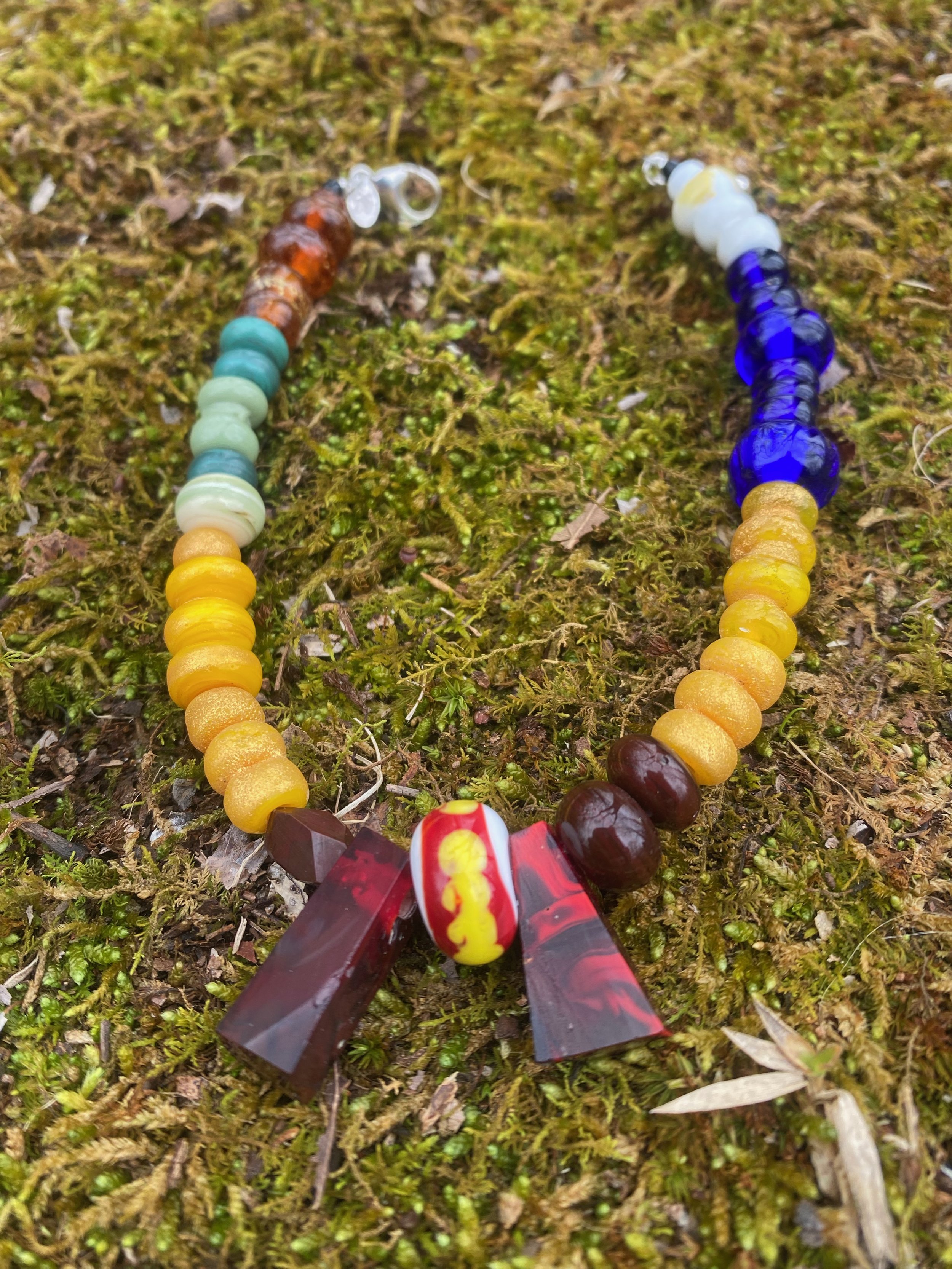
Inspired by Birka 835, My version features three cut glass beads and both foil beads of gold and silver and mica beads as a substitution for gold and silver foil.
Birka Grave 847, Mica substitution for Gold and Silver Foil
Finnish Strands
Frankish and Longbard Strands
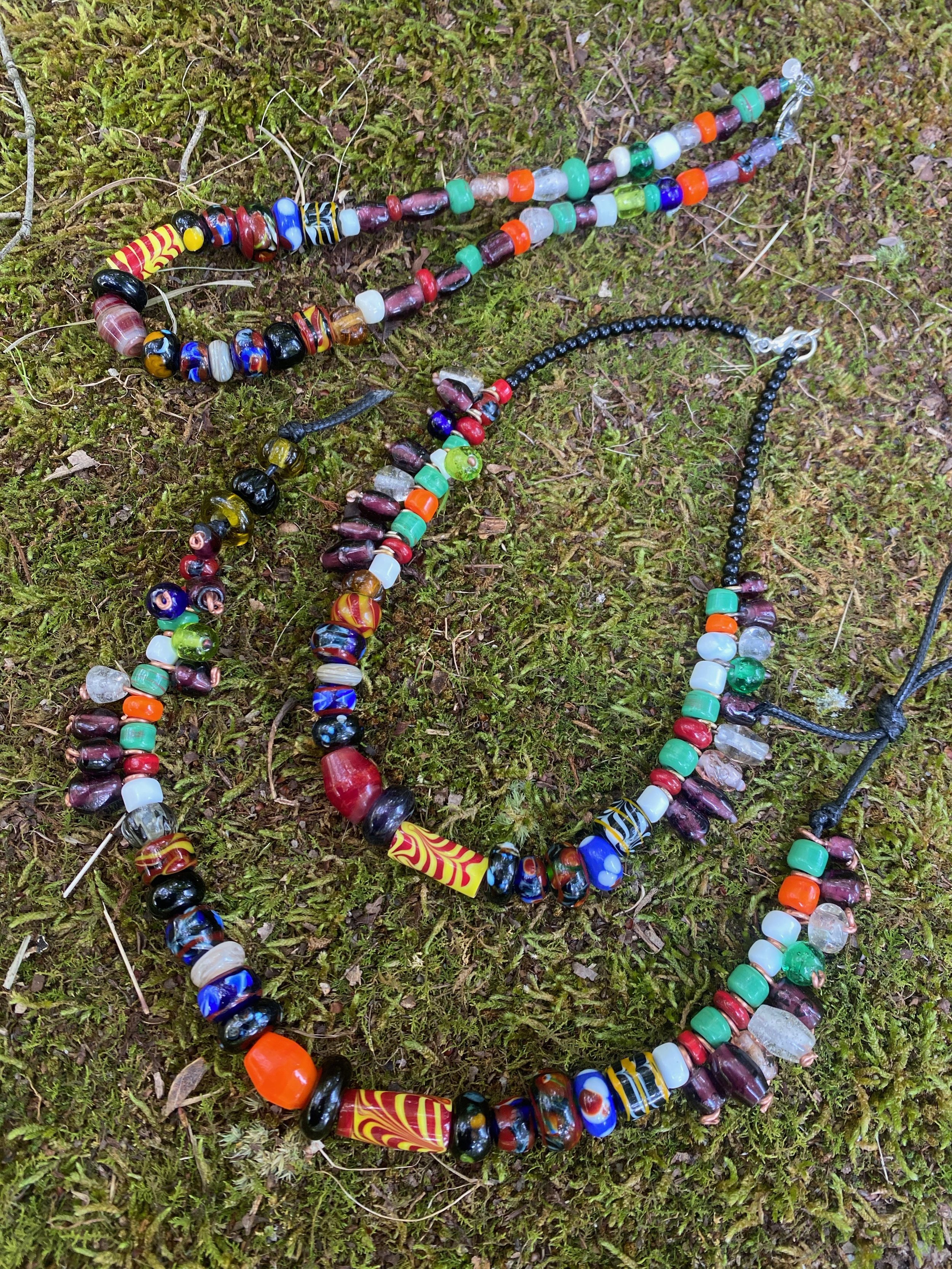
Interpretations of Longbard from Nocera Umbra Excavation 701-800 CE.
Beaded Necklace 500–600 CE (Frankish)
Beads from necklaces 500–600 (Frankish)
500 to 600 Beads from necklaces (Frankish)
Beads from a necklace, 500 to 600 CE.
Beaded Necklace 500–600 C.E.
Beaded Necklace 500 to 600 C.E.
Frankish 500-700 CE inspired by one in the Met.
Inspired by Frankish Beads in the Met's online catalog. 500-600 CE. I substituted Glass for shell and gemstones. Modern arrangement.
